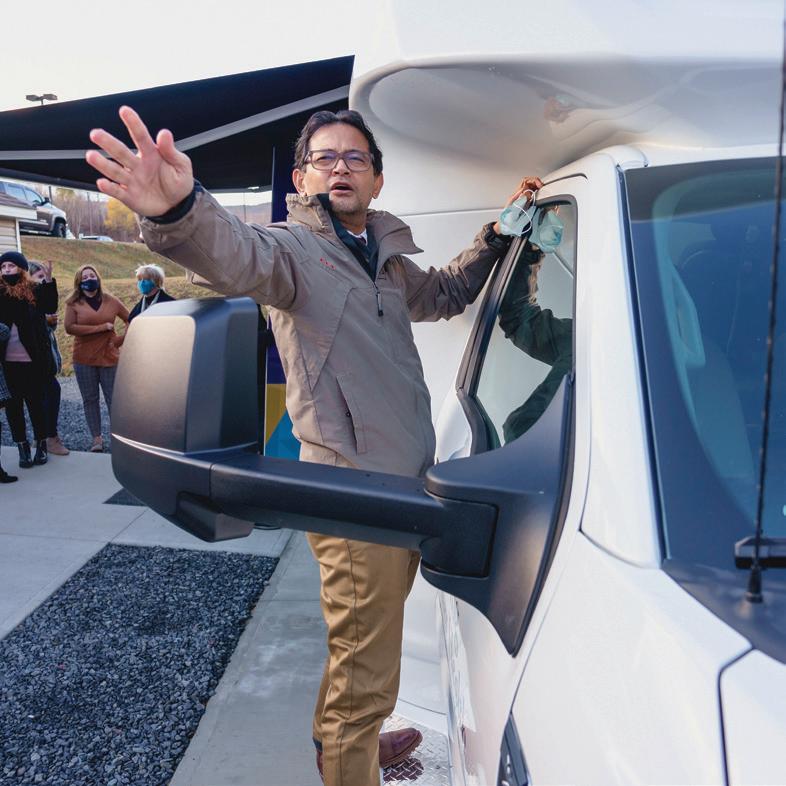

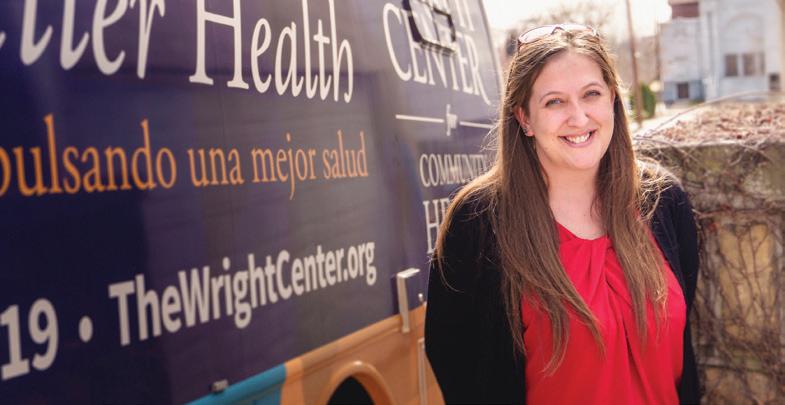

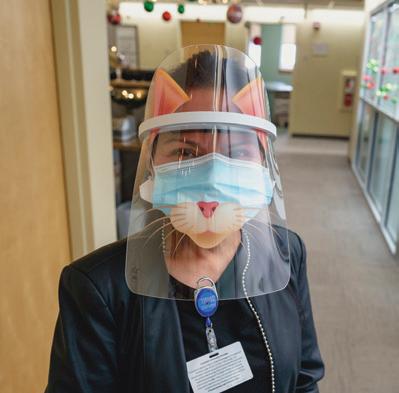
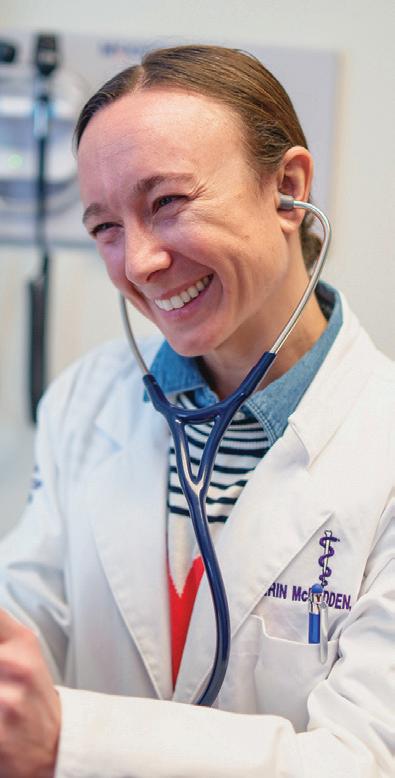

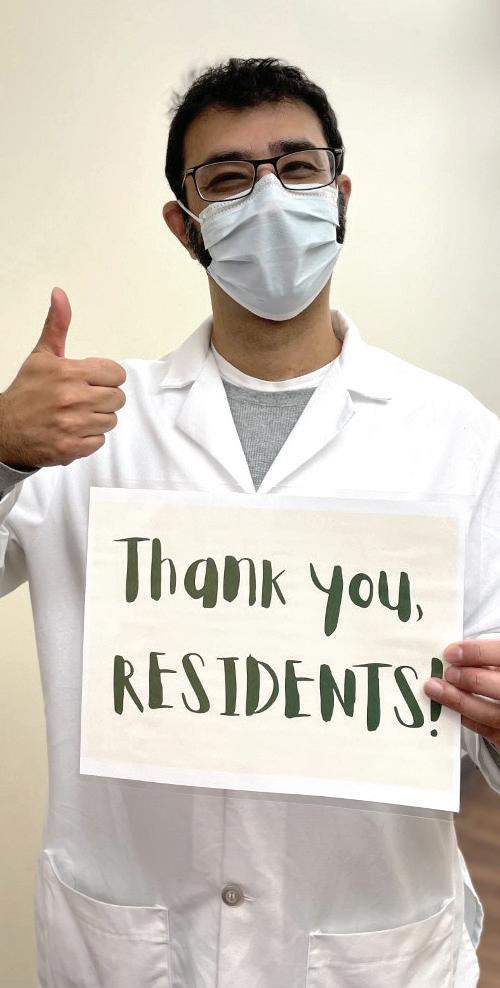


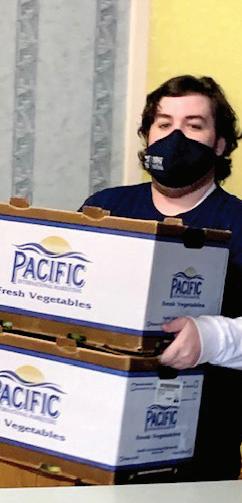
2020-21 ANNUAL REPORT
OUR MISSION:
To improve the health and welfare of our community through inclusive and responsive health services and the sustainable renewal of an inspired, competent workforce that is privileged to serve.
OUR VISION:
For our Graduate Medical Education Safety-Net Consortium framework that integrates patient care delivery, workforce development and innovation to be the leading model of primary healthcare in America.

OUR VALUES:
Do the Wright thing Be privileged to serve
Be an exceptional team player
Strive for excellence Be driven for great results Spread positivity
20 Welcome
Residents
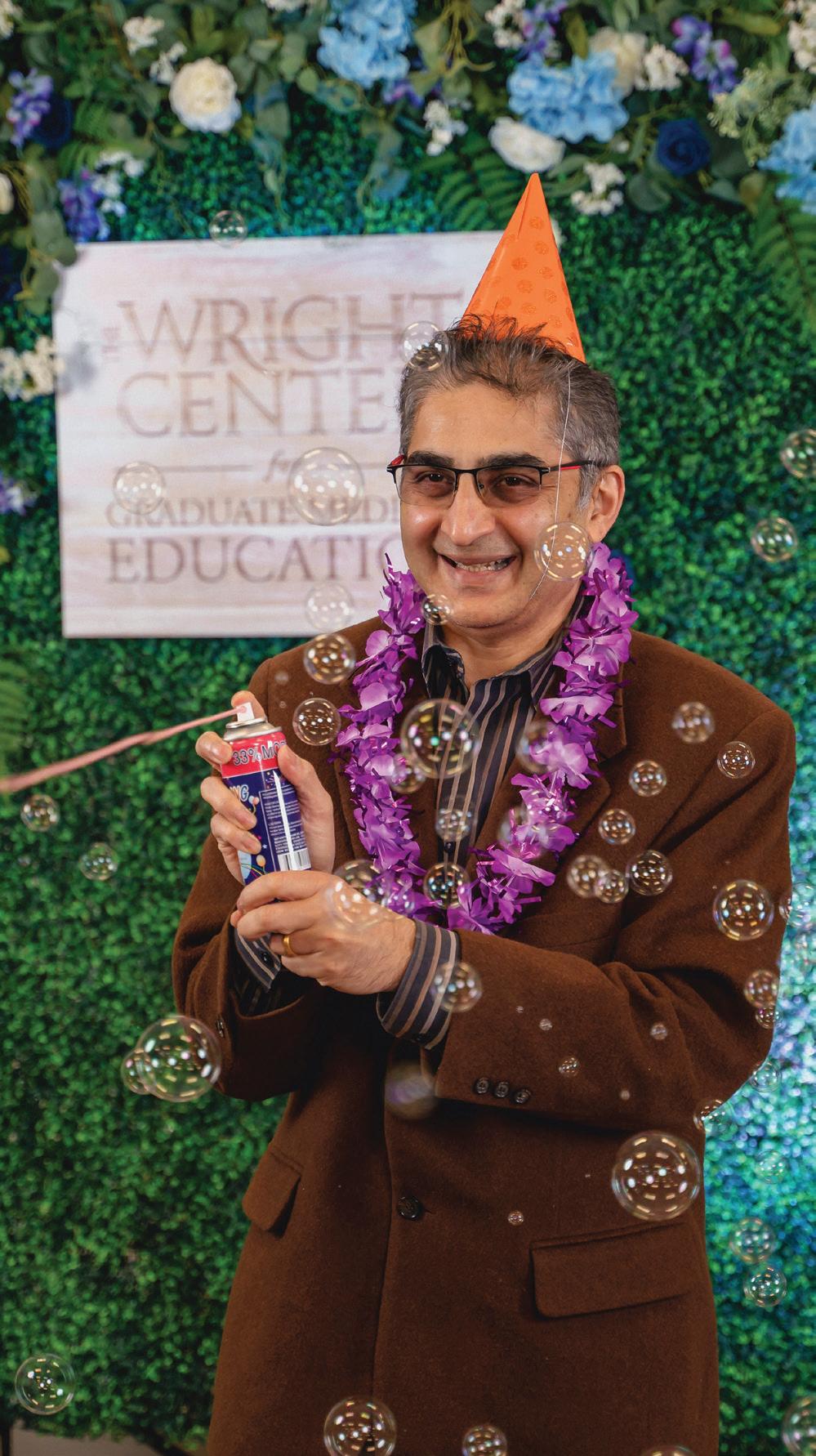
FEATURES Responding 4 Advocating 10 Recovering 14 Recognition 22 Graduation 28 Emerging 18 Message from the President & CEO 2 Fight of Their Lives . . . . . . . . . . . . . . . . . . . . . . . . . . . . . . . . . . . . . . . . . 4 No Place Like Home 10 High-Pressure Situation . . . . . . . . . . . . . . . . . . . . . . . . . . . . . . . . . . . . 14 Savoring a Fresh Start 16 New Addition to Our Wright Center Family 18 Honors and Awards . . . . . . . . . . . . . . . . . . . . . . . . . . . . . . . . . . . . . . . 22 Celebrating the Class of 2021 28
Signs of the historical time are powerfully captured in contemporary language. The unprecedented COVID-19 pandemic has expanded our daily lexicon with the following words and phrases: social distancing, personal protective equipment, contact tracing, mass vaccination, herd immunity and vaccine hesitancy. These topics are now a part of our everyday lives. Individually and collectively, we are undeniably changed forever. As we contemplate and reflect on the past academic year, I can think of one unwavering, conventional word that is now more relevant than ever: Resilience
Psychologists define resilience as the ability to recover quickly from trauma, tragedy, threats or significant sources of stress. Put simply, our collective resilience is the quality that ensures The Wright Center for Community Health and The Wright Center for Graduate Medical Education will propel our noble mission and powerful legacy into the future. Meaningful reflection on all that we’ve collectively learned and accomplished over this past year, as documented in this annual report, affords us validating reassurance that our shared trauma through the challenging pandemic will be positively transformed into post-traumatic progression of our culture for continuous learning, improvements and growth.
In the pages ahead, you’ll find remarkable examples of the profound resilience and resolute courage demonstrated by our dedicated frontline provider care teams, executive management, support staff, residents, fellows, governing boards and the patients and families we served through a tumultuous year. From the physician learners who traveled halfway around the world during a global health crisis to the record-breaking community outreach efforts and primary health services we reliably maintained, the delivery of our noble mission as an Essential Community Provider and Graduate Medical Education consortium was nothing short of awe-inspiring. An enormous thank-you to everyone for your passionate and courageous contributions!
Consider the launch of our long-awaited primary health services venue on wheels, “Driving Better Health.”
It arrived as a federally funded blessing at a time when mobile medicine became a lifeline for COVID-19 education, testing and vaccination of the most vulnerable and underserved among us. Our mobile unit’s expanded purpose of accelerating our School-Based Health team’s engagement in the Centers for Disease Control and Prevention (CDC) Catch-Up To Get Ahead campaign to offer primary series vaccinations to our children has been simply awesome and undeniably impactful.
We also notably expanded community-based Federally Qualified Health Center Look-Alike clinical learning venues with the longawaited federal designation of our rural Hawley Practice and our new Scranton Counseling Center integrated Patient-Centered Medical Home, both of which provide testimony of our unwavering commitment to address structural and demographic disparities in primary health services.

Our increasingly needsresponsive primary health services were enriched by the development of our Geriatrics Fellowship, Telespond collaboration, Alzheimer’s and Dementia Care Unit, and Lifestyle Medicine program.

PAGE 2
CEO
MESSAGE FROM THE PRESIDENT &
A year of ubiquitous uncertainty, trauma and tribulations… but also one of optimism, learning and hope.
The need to respond to the pandemic accelerated our community service-oriented growth in integrated primary health service lines through expanded access enabled by our swift launch of effective telehealth services.
In the face of intense adversity related to the unparalleled pandemic, demonstrating our resilience challenged us to tap into deeper resources in ourselves that we didn’t even know we had, not just to overcome the daily obstacles but to be transformed by them, individually and together.
Our journey over the past year has certainly catalyzed true organization-wide transformation. We learned, made adjustments, got better and became stronger, with our shared purpose empowering us to continue the important, mission-driven work we do every day. Unfortunately, according to the CDC, more than 41% of Americans have struggled with mental health issues, including anxiety, depression and substance use disorders directly related to the pandemic — a 200% increase from the 2019 average. Specifically devastating is the rising opioid misuse rates that have ushered in a spike in overdose death rates by more than 20% in the state of Pennsylvania alone. We are humbled by such realities and more inspired than ever to respond to the undeniable ongoing primary health needs of the patients, families and communities we serve.
At The Wright Center for Graduate Medical Education and The Wright Center for Community Health, we consider our public health and welfare responsibilities sacred. To the entire Wright Center Family, please know that we recognize and appreciate your unwavering
commitment and countless contributions that fulfill our mission, vision and core values in all that you do every day. The new academic year is already in motion. What kind of year will it be? What will we accomplish to improve our learning culture and mission-delivery impact? How will we optimize our contributions to promote the health and welfare of the patients, families, learners and communities we serve? How will we progress in our committed journey to become an optimal employer?
Resilience is the quality that helped us face and thrive through a multitude of challenges during the 2020 academic year, and it’s also the quality that will carry us forward through the academic year 2021. The more we reflect on, summon and strengthen our individual and collective resilience, the more we can embrace our progress into a new and better year – one that delivers us beyond our pre-pandemic status to a brighter, preferred future.
Thank you all for your eternal commitment and tireless contributions to the delivery of our shared mission and achievement of our vision today, tomorrow and in the years - make that decades - to come.
Proudly and gratefully, together, we are The Wright Center.
 LINDA THOMAS-HEMAK, M.D. PRESIDENT AND CEO, THE WRIGHT CENTER FOR COMMUNITY HEALTH AND THE WRIGHT CENTER FOR GRADUATE MEDICAL EDUCATION
LINDA THOMAS-HEMAK, M.D. PRESIDENT AND CEO, THE WRIGHT CENTER FOR COMMUNITY HEALTH AND THE WRIGHT CENTER FOR GRADUATE MEDICAL EDUCATION
PAGE 3 MESSAGE FROM THE PRESIDENT & CEO
“When we learn how to become resilient, we learn how to embrace the beautifully broad spectrum of the human experience.”
— Jaeda DeWalt
Stories of fighting COVID-19 and meeting other community needs Fight of Their Lives
For Scranton resident Amanda Vommaro and her tightknit family, the Easter holiday celebration would have to wait. Her 63-year-old father didn’t feel well, so her mother reluctantly cancelled the traditional family gathering at the couple’s house that Sunday. It was early 2020 and concern was growing in Northeast Pennsylvania about the spread of a new and awful virus.
That evening, Amanda, who had spent the day at her own home in the city’s Hill Section, got a worrisome phone call from her younger brother. Dad’s condition was deteriorating. Her brother whisked him to the hospital and dropped him off at the emergency room; no one, not even a family member, was allowed to accompany him inside.
Abruptly, it was as if Massimo Vommaro – the family patriarch and sturdy construction worker, the devout Christian who doted on his pickup truck and his three grandchildren – was gone from them.
Amanda almost immediately began what became a frantic, frustrating and weekslong crusade to bring him back.
Her story becomes intertwined with The Wright Center for Community Health, revealing a lot about its compassionate, patient-oriented employees. In fact –spoiler alert – Amanda’s tenacity as an advocate for her father’s healthcare was in part why she was later viewed as a prime candidate for a job opening at The Wright Center. She was hired last year as a Community Health Worker and is based at our Mid Valley Practice in Jermyn, where she advocates each workday on behalf of our patients.
However, the full story of Amanda and Massimo isn’t a typical narrative about overcoming adversity. The full story, like the coronavirus outbreak itself, is more complicated. It reveals how all of us, individuals and institutions, sometimes struggled but did the best we could amid an unfamiliar and fast-changing crisis.
By 11 p.m. Easter night, Amanda learned that her father had tested positive for COVID-19. A few hours later, as his lungs labored for oxygen, he was moved to the intensive care unit.
Amanda knew her father, who isn’t fluent in English, sometimes struggles to communicate with strangers. “Especially if he’s nervous,” she says. Amanda stayed in frequent contact with him by cellphone much of Monday morning.
The day passed, then another. Dad’s ability to breathe was declining. Amanda’s mother reached out to a prayer group.
On Wednesday, hope flickered. As Amanda recalls it, the hospital notified her that Massimo qualified to receive convalescent
plasma therapy – a procedure in which the plasma of a donor who has already recovered from the virus is transfused into an ill patient in an attempt to help the individual get a boost from the antibodies and recover. She expected her father to receive the one- to two-hour plasma treatment later that day.
It didn’t happen Wednesday. Or Thursday. Or Friday.

That’s the day Amanda, admittedly, exploded at hospital staff. She wanted an explanation as to why the plasma hadn’t been administered as expected; the responses were not consistent or satisfying, she says. Meantime, her father “kept getting worse and worse,” she says. If he did answer the phone now, he sounded drained.
Hope resurfaced on Friday evening. Amanda recalls being told by someone at the hospital that if she could find a donor who had her father’s blood type — A positive — arrangements could be made for what’s known as a directed donation. Massimo would be specified as the recipient of the plasma donation, no waiting on a list.
Amanda and her brother quickly took to social media, posting messages about their father’s urgent need for a plasma donor. “Saturday morning,” she says, “we had the donor.”
But Amanda’s euphoria didn’t last. During yet another disheartening and perplexing communication with a hospital employee, she says she heard only bad news. The policy won’t allow for a directed plasma donation. Besides, your father doesn’t qualify: over the age limit, pre-existing conditions. He’s declining. Needs to be sedated. Requires intubation. Will you tell him?
“At 7 o’clock in the morning, I had to put everything I was feeling aside and convince my dad – while calming him – that intubation was the correct procedure,” she says. “So that’s what happened. And that’s when I started fighting with the hospital.”
Amanda was fierce. She poured out her frustration about the situation on Facebook. She sought the help of powerful allies. She cold-called strangers, including a U.S. congressman and a blood center’s director. She texted a hospital board leader.
Here is what Amanda did not do: She did not cry, she did not doubt. “I believe if you want something to happen, you pray on it. You put it out there and positive vibes come back,” she says. “Putting doubt out there would not be positive vibes. So I didn’t.”
Ultimately, after pleading her case to enough people, Amanda’s persistence was rewarded. She received the go-ahead for Massimo to receive a directed donation.
PAGE 4 RESPONDING
I had to put everything I was feeling aside and convince my dad … that intubation was the correct procedure.”
AMANDA VOMMARO
The donor, one of more than 25 individuals to volunteer to give plasma in response to the family’s plea for help, had been located with the assistance of Kara Seitzinger, The Wright Center’s Director of Public Affairs. Kara learned about the family’s plight and helped to spread the appeal for a viable donor via social media channels, both professional and personal. Forty-five minutes later, a neighbor of hers responded.
The Wright Center’s Marianne Linko, an LPN nurse manager, soon joined the effort, making arrangements at partner facilities so that the would-be donor’s blood type and other eligibility criteria could quickly be evaluated.
Scranton resident Bob Cooney was, by all accounts, the perfect donor. He had the matching blood type. He had already been stricken with COVID-19, recovered and then been free of symptoms for the required number of days. Bob even traveled to the Lehigh Valley to donate his plasma at an appropriate facility, one that was able to rapidly ship out the donation for processing and rush it back to the hospital in about two days.
By then, Massimo no longer was sedated, but he continued to rely on supplemental oxygen and was, in Amanda’s words, “still not good.”
On April 24 – 12 days after Easter – Massimo received the muchawaited convalescent plasma therapy, thanks to his daughter’s insistence and the involvement of dozens of caring individuals whose input made the procedure possible.
Massimo Vommaro, center, overcame COVID-19 after a plasma donation secured through the dogged efforts of, from left: Kara Seitzinger, Director of Public Affairs; his own daughter, Amanda Vommaro, a Community Health Worker; and Marianne Linko, LPN Nurse Manager.

“A few days later, he kicked the fever … and he just started to make his way better,” Amanda says. From the hospital, where providers and staff ceaselessly performed their heroic work, Massimo eventually was transferred to a physical rehabilitation facility and then, at last, he returned home. It was now June. Finally able to be reunited with her father, Amanda entered the bedroom where he was resting, wrapped her arms around the man she adored, held him and, for the first time since the family’s ordeal began, she cried.
> Full version of this article at thewrightcenter.org/our-stories
RESPONDING PAGE 5
RESPONDING
Infusion Therapy
COMBATTING COVID
The Wright Center never wavered in service to our community during the COVID-19 pandemic thanks to the tireless efforts of our Emergency Preparedness teams, our steadfast employees and physician learners who continued to hold the front lines of care, and the dedicated administrative staff who supported daily mission delivery. Our doors stayed open, our staff remained rooted to their posts, and we all demonstrated what it looks like to be privileged to serve.
Our cutting-edge approach to caring for the community started with meeting the high demand for outpatient COVID testing and then our historic deployment of the COVID-19 vaccine just in time for the winter holiday season. We took our role as stewards of this marvel of modern medicine seriously, and shared it not only with our own staff and residents, but with healthcare personnel throughout the region. By spring, changing guidelines allowed us to open up COVID vaccinations to children ages 12 and up, ushering in a new population of COVID Crushers as we worked toward herd immunity. Thanks to our patient-centered protocol for inoculations, providers also uncovered a number of other health issues in those we vaccinated, even those who weren’t our patients. In a single month, for example, nearly 21% of individuals who came in for the COVID vaccine were found to have undiagnosed hypertension among other serious conditions. We also successfully launched outpatient COVID-19 Infusion Therapy using monoclonal antibodies, which saved more than 100 COVIDpositive patients from having damaging – or even life-threatening – reactions to the virus. We’re happy to report that all treated avoided hospitalization.
While the pandemic presented no shortage of challenges, it also empowered our staff and

physician learners to embrace opportunities to serve our mission in new ways. Whether it was the overnight — and wildly successful — launch of our telehealth services, the more user-friendly website we redesigned to better connect with our community, or our deployment of innovative technological solutions to ensure continued care and learning, the common theme of our COVID response was resilience.
INFUSING HOPE
As Northeast Pennsylvania reeled from staggering numbers of COVID-positive cases during the infancy of the COVID vaccine rollout, our clinical staff transformed the auditorium of our Scranton Practice into an outpatient Infusion Therapy Treatment Center.
There, monoclonal antibodies emerged as the unsung heroes in our fight against COVID by alleviating viral symptoms in patients who received the treatment within 10 days of a positive test. By thwarting the body from a damaging, or even life-threatening, inflammatory response, each of our infusion therapy patients treated avoided hospitalization.
Care teams were even deployed to residential assisted living facilities to administer the highly effective infusions, where medically vulnerable patients at highest risk reported dramatic improvements within hours of their treatments.
SETTING A COURSE FOR COMMUNITY HEALTH
In recent years, our quest for new and innovative ways to deliver comprehensive primary care to as many Northeast Pennsylvania residents as possible has led us to regularly opening new primary care locations throughout all corners of the region. For the first time ever this past year, we hit the road with a mobile medical unit, our custom-built, stateof-the-art vehicle called Driving Better Health.
The unveiling of this 34-foot-long primary care clinic on wheels happened just when our community needed it most: In its first few months, Driving Better Health served as our COVID response unit, bringing testing, education and outreach to underserved communities in our area. It also served as a critical platform for routine vaccine catchup clinics for children and families, and eventually, as a
vehicle for COVID-19 vaccine dissemination to high-risk facilities, like senior high-rises.
Driving Better Health has empowered our clinical teams to better fulfill our goal of bringing high-quality primary care directly into communities, easing the burden for patients who might otherwise have difficulty accessing that care due to transportation issues and by literally meeting people where they are. In the future, patients will be able to visit it for check-ups and even dental care (special chairs have been installed for exactly that purpose). As it continues to crisscross the region, Driving Better Health breaks down barriers preventing NEPA residents from accessing the exceptional healthcare they deserve.
COVID-19 Tests 21,044 PAGE 6
Patients
Team COVIDCrus h re IGotVaccinated! COVID-19 Vaccine Shots 37,042 161
Everyone’s journey to The Wright Center is unique, but some are more complicated and inspirational than others. Regional Family Medicine Resident Pramesh Baral, M.D., proved his deep commitment to serving patients and families when he traveled for over a week to get from Kathmandu to Scranton to begin his residency. It all started in the summer of 2020 when Dr. Baral was unable to get visa approval in his home country of Nepal when the U.S. Embassy in Kathmandu closed in the wake of the COVID-19 pandemic. Deciding to embark on a tourist visa despite risk of deportation, Dr. Baral made up his mind: He was going to make it, somehow, some way. “I told everyone, ‘I have important things to do. I must go. Now more than ever, I need to help people,’” he explained. Upon Dr. Baral’s arrival in New York City, he spent hours trying to convince immigration officials to grant him entry into the country to start his residency training. Instead, Dr. Baral was redirected to Mexico City, where he waited almost a week for a new visa. Once he had it in hand, Dr. Baral flew BACK to New York and paid a taxi to drive him more than 120 miles to Scranton. The entire trip was worth it, he said, and he’s enjoyed the last year living, working and training in NEPA. “The people are friendly and very pleasant, and The Wright Center has been very welcoming for a new resident like me. I can’t stress how helpful everyone has been, and I look forward to working in this great place as I transition further into my residency program.”
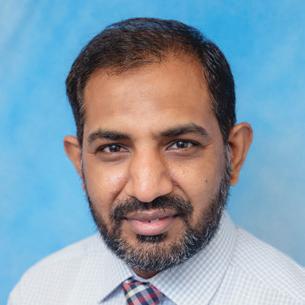


LEARNING IN THE TRENCHES
“In regard to serving on the front lines during a pandemic, this is something very new and different. Usually people in residency training don’t have to do something like this, but it’s our duty to serve the community. Seeing how The Wright Center as a group has come together in such a period of time to create areas for mass testing and the amount of patients we’ve vaccinated, I think it’s incredible. This teamwork — pulling together, working quickly to help our community — is the heart of The Wright Center.”
—Kristy Simonetti, M.D., Family Medicine Resident
“To date, I’ve given the vaccine to many patients. It is like holding a piece of cutting-edge technology in your hand. Regardless of the pandemic, it’s an honor and a privilege to serve the community, even more so during a time of such need. Seeing people at their worst and seeing something so impressive, I think it’s quite a responsibility, but I think it’s only made me better as a physician.”
—Aaron Simonetti, M.D., Internal Medicine Resident
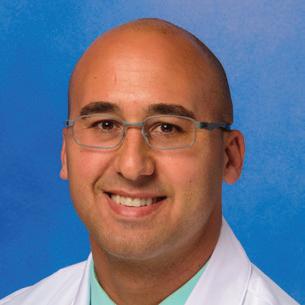
“I know it’s a difficult time for patients and the population at large, but it’s been such a great pleasure working for our patients. I participated in giving the COVID-19 vaccines in the clinics, which really excited me a lot. It’s part of preventive care and it was groundbreaking. I’m glad we were part of a huge moment in history. The Wright Center made it all possible for us. I think it’s definitely enlightening doing residency training during the time when COVID hit us. It’s something I’ll always remember and tell generations to come: how we tried to tackle the pandemic and serve the patients and families during such difficult times.”
—Maham Malik, M.D., Internal Medicine Resident

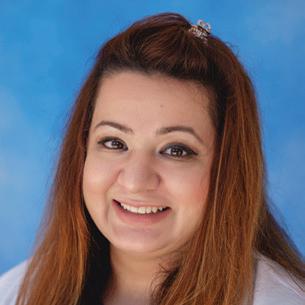
“The most important thing during this whole pandemic was reaching the entire elderly population, who were more vulnerable and afraid of COVID-19. I could see a happiness and hope in their eyes whenever we approached them and were vaccinating them. When they needed it, I’m glad I was part of serving them with The Wright Center.”
—Naeem Ijaz, M.D., 2021 Graduate of Geriatrics Fellowship Program
This resource is supported by the Health Resources and Services Administration (HRSA) of the U.S. Department of Health and Human Services (HHS) as part of a financial assistance award totaling $372,002.00 with 0% financed with nongovernmental sources. The resource is managed by a healthcare organization and does not necessarily represent the official views of, nor an endorsement, by HRSA/HHS, or the U.S. Government. For more information, please visit HRSA.gov.
ON THE WRIGHT PATH RESPONDING PAGE 7
Scranton Kathmandu 7,504 miles
A NEW MEDICAL HOME RESPONDING
The Wright Center embedded four primary care offices in the newly opened Scranton Counseling Center (SCC) on Cherry Street, enabling our providers to deliver highquality healthcare to SCC’s clients, including individuals with severe mental illnesses. Members of our executive team and other employees attended a ribbon-cutting ceremony at the Cherry Street site on April 8, 2021. The venue, which is just down the street from our Scranton
Practice, serves as an extension of our Patient-Centered Medical Home model, giving patients and their families the convenience of going to a single location to access integrated mental health and primary care services. We’ve partnered with SCC in the past at its Adams Avenue location, but this bright and innovative facility expands our Scranton-based clinical space by an additional 1,350 square feet to better serve the community.

WELCOME TO WAYNE COUNTY
Our organization celebrated the opening of its Hawley Practice on July 1, 2020, marking an important expansion into rural Wayne County to improve healthcare accessibility for families and individuals in this underserved community. The clinic, located at 103 Spruce St., provides comprehensive primary and pediatric care to residents of Wayne and Pike counties and surrounding areas. The practice is expected to serve about 1,400 patients, including individuals who receive Medication-Assisted Treatment (MAT) for substance use disorders. Longtime employee Lida Kiefer was promoted to Practice Manager at the site.
During November, our executives met in Wayne County with the county commissioners, area healthcare administrators and other dignitaries to jointly observe National Rural Health Day. The commissioners lauded The Wright Center for having quickly filled an urgent need for MAT services in the county after the unexpected death in 2019 of a longtime area physician; we began providing those services at a temporary site, prior to the opening of the Hawley Practice, so that patients’ care regimens were not interrupted. Noting that a “spirit of cooperation” exists among medical providers in the county, Dr. Linda ThomasHemak said, “We’re looking forward to deepening our partnerships.”

PAGE 8
From left, Joseph Adams, Wayne County Commissioner; Fred Jackson, Executive Director, Wayne Memorial Community Health Centers; David Hoff, CEO, Wayne Memorial Hospital; Dr. Linda Thomas-Hemak, Wright Center President and CEO; Brian Smith, Chairman, Wayne County Commissioner; and Jocelyn Cramer, Wayne County Commissioner, at the Wayne County Courthouse for National Rural Health Day.
In any given year, our Patient and Community Engagement efforts stand out for the myriad ways they support our neighbors throughout Northeast Pennsylvania. During the pandemic, our mission-critical outreach and volunteer initiatives went above and beyond thanks to the leadership of Marah Lettieri, Director of Patient Outreach and Engagement (bottom left), and Geraldine McAndrew, Director of Community Outreach and Engagement (bottom right), as well as outgoing TWCPCE Board Chair Gerard Geoffroy (top left) and new Co-Chair William Waters, Ph.D. (top right).
Additionally, two of the numerous blood drives we co-hosted along with the local chapter of the American Red Cross honored the lives and memories of individuals dear to our Wright Center family: Carole Cook Wright, wife of our namesake founder Dr. Robert Wright, and William Thomas, father of President/ CEO Dr. Linda Thomas-Hemak.
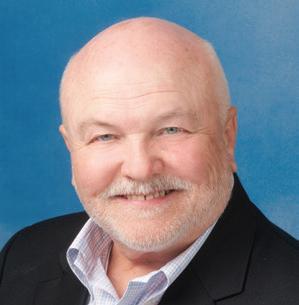

BREAKING BARRIERS
To help patients concentrate on getting and staying healthy rather than financial and other life stressors, our organization has employed and trained a growing team of Community Health Workers (CHWs).

These employees, many of whom joined us immediately before or during the COVID-19 pandemic, serve on the front lines, often meeting face to face with patients who have completed screenings for the socioeconomic determinants of health (SEDH) and indicated they lack necessities such as food, adequate clothing, safe housing and transportation.
The CHW team proved to be a key part of our pandemic response, especially as demand for basic necessities skyrocketed during the outbreak’s early days. The workers helped to execute a number of initiatives, including drive-by food distributions and, more recently, our community-based vaccine clinics for vulnerable populations such as the elderly and people experiencing homelessness.
“Our community health workers have been tireless advocates for our patients and community members,” said Marah Lettieri, The Wright Center’s Director of Patient Outreach and Engagement. “They are a great resource to our health center.”
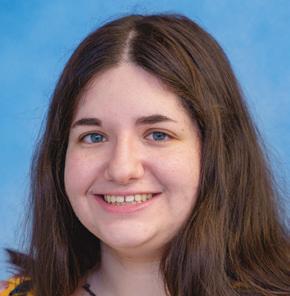
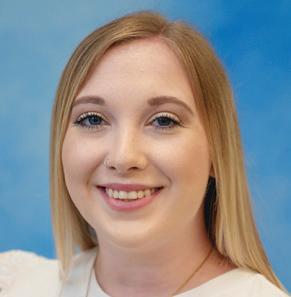


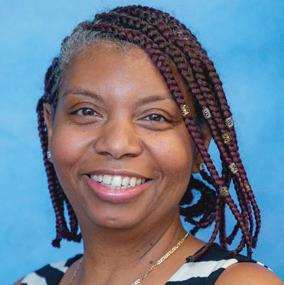
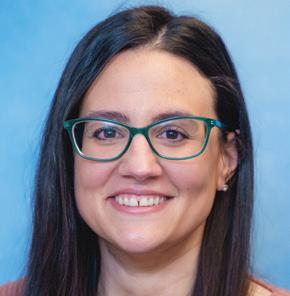
Based on each patient’s unique needs, the CHW will work to eliminate barriers to care and link the patient to helpful social service programs or community partners. Connections are made, for example, to the federal Supplemental Nutrition Assistance Program, various health insurance programs, job training and other supports. Our CHWs also assist patients and their families by offering informal counseling, advocacy and tools to increase health literacy and self-sufficiency.
Members of our CHW team have access to ongoing training opportunities through the Northeast Pennsylvania Area Health Education Center.
IN TIMES OF NEED RESPONDING PAGE 9 Backpacks Given to Students 1,000 Winter Coats Distributed Families Fed through Emergency Food Drives 1,880 378 Lives Saved with 186 Pints of Blood Donated 558 Routine Vaccines Administered via “CatchUp to Get Ahead” and School Vaccine Clinics 2,546
Shaqwanna Foster
Aislinn Toolan
Sister Maureen Marion Shauna Havirlak
Amanda Vommaro Giavanna Villano
For Ann, 95, a major hurdle to remaining safe at home was the literal high step necessary to get into her bathtub.

No Place Like Home
Of all the places Ann has traveled in her 95 years, from Atlantic City’s casino row to sunny California, she prefers one spot above all others – her home in Archbald, PA.
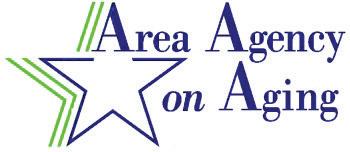
The borough native was born in the family homestead, and nearly a century later that’s where she lives and intends to stay.

“Oh, they wanted me to move; they wanted me to go to a high-rise,” said Ann, a retired garment worker. “I don’t want to go anywhere. I was born here and I want to die here, if it happens that way.”
At The Wright Center for Community Health, we respect such wishes expressed by many older adults who say they prefer to stay in the familiar and comforting environments of their own homes, living
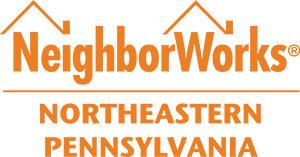
independently. In fact, our Geriatric Service Line was developed to enable and support aging in place by providing healthcare services in the community, including house calls and connections to community resources that prioritize the individual’s dignity, safety and capacity for independent living. In Ann’s case, a major hurdle to remaining safe at home was the literal high step necessary to get into her bathtub. “I didn’t want to fall,” she said.
Ann voiced her concern during one of her routine healthcare appointments at our Mid Valley Practice. Amanda Vommaro, a Community Health Worker, was soon enlisted to help by contacting Lackawanna Countybased partner organizations and lobbying on Ann’s behalf for necessary bathroom renovations including timely installation of a walk-in shower stall with a very low clearance.
PAGE 10
ADVOCATING
A look at how we’re transforming the delivery of healthcare
SERVING OUR SENIORS
In response to the unprecedented growth rate of Pennsylvania’s aging population and the alarming shortage of doctors and care teams who specialize in the physical, mental and behavioral health challenges specific to seniors, we launched our new Geriatric Service Line this year. Noted area geriatrician Edward Dzielak, D.O. (top), a graduate of Scranton Temple Residency Program (now The Wright Center for Graduate Medical Education), emerged from retirement to provide consultations and lead our pioneering Geriatrics Fellowship Program, which was funded by the U.S. Health Resources and Services Administration.
The geriatrics program is recognized by the Institute for Healthcare Improvement as an Age-Friendly Health System Partner for providing a full spectrum of comprehensive, safety-net


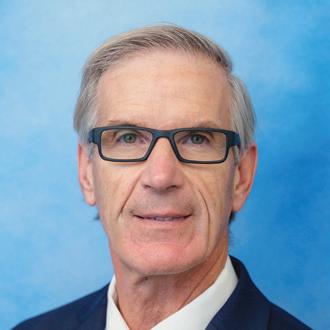
primary health and support services for seniors. These efforts are led by Nicole Lipinski (bottom), who was promoted to Director of the Geriatric Service Line.
A key component of the geriatrics program has been the Alzheimer’s and Dementia Clinic, which provides comprehensive evaluation and testing and is accessible no matter who the patient’s primary care doctor is. The Wright Center was one of only eight health systems across the country selected as an adopter of the innovative Alzheimer’s and Dementia Care Program created at the University of California, Los Angeles (UCLA).
Countless families in Northeast Pennsylvania have benefited from these services already, which became even more critical as we navigated the challenges the pandemic presented for at-risk older adults, including isolation.


The months-long process culminated in April 2021, thanks to the collaborative efforts and resources of the Lackawanna County Area Agency on Aging and the neighborhoodenhancing nonprofit known as NeighborWorks Northeastern Pennsylvania.



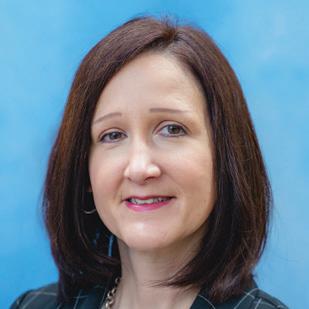
NeighborWorks operates an Aging in Place program for homeowners age 60 and above, providing eligible applicants with services and home modifications to assist them in continuing to live safely and with dignity in their homes and communities.

Over the course of a few days, Ann’s old pink bathtub was removed and replaced by a walk-in shower. Pulling back a shower curtain to allow visitors to see the newly completed project, she asked, “Isn’t that beautiful?”
Our Geriatric Service Line is based on the belief that personalized, regular care – rather than crisis management –compassionately improves the quality of life for older patients.
During a recent visit to Ann’s house, Kari Machelli, R.N., The Wright Center’s Associate Vice President of Integrated Primary Health Services, suggested that, as an alternative to watching TV, Ann might want to try an iPad. It’s available on loan through The Wright Center to play games, color and do puzzles, she said.
Likewise, she asked if Ann would like to be visited periodically by Sister Maureen Marion, The Wright Center’s Life Enhancement Spiritual Aide. Ann was receptive to both ideas. Once outside, Kari said: “Oh, my god, I love Ann! I want to take her home.” That’s only wishful thinking, of course, because Ann wouldn’t go. She’s happy to remain right where she is.
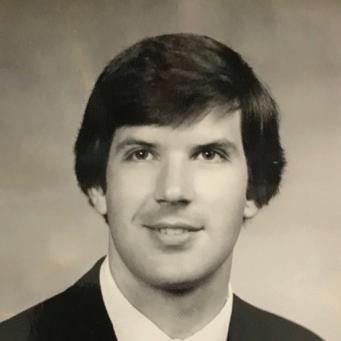
ADVOCATING PAGE 11 > Full version of this article at thewrightcenter.org/our-stories
Kari Machelli, R.N., visits with Ann.
INTEROPERABILITY: OUR PREFERRED FUTURE
As part of our organization’s ongoing effort to encourage health information sharing between providers and systems, Dr. Linda Thomas-Hemak moderated a series of televised programs on the topic of interoperability. The programs, aired by public broadcaster WVIA, shared the perspectives of panelists from The Wright Center, Geisinger, UPMC, various health information exchanges, including KeyHIE, and the Pennsylvania eHealth Partnership Program.


The COVID-19 pandemic exposed weaknesses in the American healthcare system’s ability to communicate in a timely, seamless fashion. The inability to share information between systems slowed and potentially jeopardized patient care during early phases of the coronavirus outbreak. It later led to confusion regarding who had been vaccinated, when and with which products. And, in our region, the disconnect surrounding patient data also slowed the release of critical information about COVID-19’s impact within long-term care facilities. The Wright Center received congratulations for our advocacy on the issue of interoperability from an influential thought leader. Dr. Don Rucker, National Coordinator for Health Information Technology for the U.S. Department of Health & Human Services, recorded a powerful video message that was shown in the first episode of our special series, “Connecting Our Country, Saving Lives: The Healthcare Interoperability Agenda.”
PIONEERING BEHAVIORAL HEALTH INTEGRATION



This past year, we made great strides on our continued journey to answer Pennsylvania Gov. Tom Wolf’s call for “whole-person care” and to achieve the six levels of Primary Care/Behavioral Health Integration laid out by the U.S. Substance Abuse and Mental Health Services Administration.
We’ve grown our behavioral health team with the addition of our first-ever clinical psychologist, Colleen Brown, Psy.D. (top), and new Behavioral Health Manager Saroj Shrestha (middle), who now serve with Scott Constantini (bottom), Director of Behavioral Health.
We also welcomed psychiatrist Vinod Sharma, M.D. (seated), who was promoted to Medical Director of our Behavioral Health Service Line and Associate Program Director for our expanding Psychiatry Residency Program. Thanks to generous grant funding from the U.S. Health Resources and Services Administration, we were able to add four more residency training spots to our flourishing GME program, bringing us up to 22.
PAGE 12 ADVOCATING
With more than 2 million adults in America living with undetected and undiagnosed hepatitis C, a primary care workflow that intentionally integrated hepatitis testing and treatment was critical to our care teams.


“It’s a disease that’s very, very subtle,” shared Dr. Aloysius “Mark” Madhok (above left), Internal Medicine PhysicianFaculty. “Many patients do not realize they have it. Patients should seek testing at least once in their lifetime. It’s so crucial to find the virus and treat it early.”
Through a simple blood test that can be ordered by any of our providers at any of our locations, we’ve made the
choice to tackle this silent epidemic head-on. For patients who receive a positive diagnosis, our infectious disease specialists offer treatment in our Lackawanna and Luzerne county offices, which can cure the viral infection.
“Anyone from the age of 17 to 79 is now being routinely tested for hepatitis C,” explained Dr. Mladen Jecmenica (above right), the first graduate of our Gastroenterology Fellowship Program. “The reason why we aggressively treat it these days is because it can remain dormant in your liver for your whole life. We want to help patients avoid longterm complications, including cirrhosis and cancer.”
ADVOCATING PAGE 13
GETTING A BETTER HANDLE ON HEP C
High-Pressure Situation
Linda Marhelski’s mad scramble to get vaccinated against COVID-19 led her to The Wright Center for Community Health, a twist of fate that she credits with saving her life.
The Throop resident arrived at our Mid Valley Practice in Jermyn, eager for the newly released coronavirus vaccine that would offer protection to herself and her family, especially her husband, whose recent bout of pneumonia had both of them worried. Linda’s head had been bothering her; she chalked it up to tension. Pandemic stress perhaps.
But as Linda sat in the exam room – and her vital signs were taken prior to the highly anticipated shot – a practitioner called out her blood pressure reading: an alarmingly high “212 over 97.”
A blood pressure level in that category signals “hypertensive crisis” and indicates a patient should immediately connect with a doctor to evaluate the situation before it leads to a medical emergency such as a stroke.
“If I had gone for the vaccine someplace else, where they didn’t take my blood pressure, and then just been out walking around,” she says, “I could be dead today.”
That sobering realization didn’t fully hit Linda until later. A first-time Wright Center patient, she had not been in the habit of routinely visiting her doctor’s office or self-monitoring her blood pressure. So when she heard the number 212, it didn’t register as being a warning sign. (Her hypertension had previously been diagnosed, but she had been taking a medication for it and believed it was under control.)
On the day her issue was detected at The Wright Center’s exam room, Linda was closely monitored until her pressure decreased.
She was able to receive the COVID vaccine. And she departed with a prescription for a second blood pressure-lowering medication and guidance to follow up quickly with her own family physician.
When she returned to The Wright Center a few weeks later to receive her second dose of the vaccine, she couldn’t contain her gratitude. She told the care team, “You saved my life!”
Her thanks and relief were compounded when she got the second shot, boosting her immunity against the COVID-19 virus. Until then, the pandemic had been particularly nerve-wracking for Linda and her husband, Walter Marhelski, a Vietnam War veteran.

Walter copes with heart and lung issues that he attributes to chemical exposure while serving overseas. The Old Forge native developed pneumonia and landed in an area hospital in January 2020. By year’s end, as the newly developed COVID-19 vaccines became available, Linda and Walter were ready to roll up their sleeves. “We couldn’t wait to get the shot,” she says.
But early demand for the vaccines made it seemingly impossible for them to make an appointment. Walter ultimately received the vaccine through the VA Medical Center. In attempts to get Linda vaccinated too, he made phone calls and visited websites for an exhaustive list of places. No luck; she got no further than waiting lists.
Finally, the couple learned that vaccines were available at The Wright Center. “After I called,” says Linda, “I didn’t have to wait long before my appointment. It was quick.”
In Linda’s case, that was a blessing; time was of the essence.
> Full version of this article at thewrightcenter.org/our-stories
PAGE 14
A glance at how our healing involves self-reflection, learning and grace
RECOVERING
Linda Marhelski’s visit to The Wright Center for a vaccine kept her medically fragile husband, Walter, safe and also uncovered her own undiagnosed hypertension.
COURAGE UNDER FIRE
As if a global pandemic wasn’t enough, other incidents – including upheaval in our nation’s capital – challenged our collective resiliency within the past year, calling on us to put our best selves on display.
The Jan. 6 attack on the U.S. Capitol Building hit particularly close to home for colleagues at our partnering site in Washington, D.C., Unity Health Care. Unity’s clinics closed early on that day, allowing residents, faculty and staff to travel home in the relative safety of daylight before the city’s 6 p.m. curfew.

Within hours of the riot, Eleni O’Donovan, M.D., faculty for our National Family Medicine Residency (NFMR), responded to the unprecedented and unsettling situation with courage and grace, writing an email that was circulated to Unity’s residents and then to others in our NFMR network. In it, she began by explaining that her family can view the Capitol from their residence, and when they first moved to the city, her then 2-year-old daughter asked what the building was called. Unsatisfied with the adults’ response, her daughter instead christened the place with a name that the family continues to use: “the People’s Castle.” Dr. O’Donovan’s email then delved into the emotional toll of traumatic events like those taking place in the city. “As the medical director at the jail,” she wrote, “during events like these one of my biggest ‘dreads’ for the next day is anticipating having to go to work and potentially deal with arrestees who participated. I always have to wake up early and meditate on the oath we all take as physicians and Dr. Martin Luther King Jr.’s words about love being the only true response to hate.”

Her inspirational message continued: “The work that we do is part of the light driving out the darkness, and I want to recognize that being a physician at times like these can be extraordinarily difficult. We have to be professional, and ‘on,’ and operating at a very high level during a pandemic and a moral and cultural crisis in our nation. I hope your work can continue to be a source of joy and pride, even when tough, but I know that sometimes it feels simply draining and exhausting.”
She then reminded employees of the counseling resources available to them through the NexGen Employee Assistance Program (EAP), which is included as part of our organization’s benefits package.
“Thank you, all, for the work you are doing to support and protect our patients and to lift and support each other,” she concluded. “We will get through this together.”
COMMITTED DURING CRISIS
Our partnering site in Tucson, Arizona, El Rio Health, was overwhelmed in early 2021 with high volumes of COVID-19 patients. The conditions there warranted Emergency Categorization status authorized by the Accreditation Council for Graduate Medical Education starting Jan. 22 and applied to all training sites in our National Family Medicine Residency (NFMR) consortium. By Feb. 20, the situation had improved, and the consortium emerged from the temporary distressed status.

Our gratitude goes to Jumee Barooah, M.D., Designated Institutional Official, as well as our NFMR partner site leaders – including Douglas Spegman, M.D. (top right), El Rio’s Chief Clinical Officer, and Felipe Perez, M.D. (bottom right), Local Program Director.
Together with the faculty and residents, they all worked together to make this declaration possible when needed and continued to work tirelessly throughout the trying time, showing incredible resilience.
RECOVERING PAGE 15
Savoring a Fresh Start
For the first 39 years of her life, Vanessa DeRosa never ate Chinese food.
As someone coping since childhood with chronic kidney disease, the Jessup resident had strictly avoided foods high in salt and likely to cause a buildup of sodium and water in her body. However, things changed on April 29, 2021 – the date Vanessa received a kidney transplant.


The longtime Wright Center patient, who receives primary care services at our Mid Valley Practice, often in consultation with an outside nephrologist, is recovering at home this summer. She has sampled foods that were once off-limits and now anxiously awaits her surgeon’s OK to resume all normal activities, perhaps in time for an end-ofsummer trip to a favorite destination: Knoebels Amusement Resort.
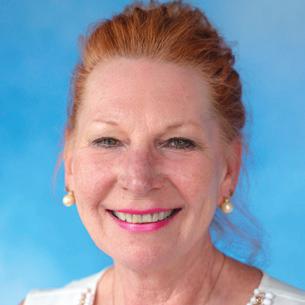
“Since the surgery, she has energy like you wouldn’t believe,” says Luci Kura, who is Vanessa’s mother and caregiver.
Luci helps her daughter – a smart, determined soul who enjoys bowling, shopping and swimming – to better manage with multiple challenges, including autism. The duo is in the habit of visiting our clinic about every three months for Vanessa’s regular appointments, and they have made unscheduled trips for emergent issues such as infections.
“Everyone there knows Vanessa; everyone loves her,” says Luci. “And I just feel so welcome when I go there. I feel like part of the team.”
Luci credits The Wright Center for allowing her to be a respected partner in health decisions that affect her daughter, especially regarding medications. “The only medication she is on now is for her kidneys, the anti-rejection drug related to her surgery. But she’s not on any psychotropic drugs, none whatsoever,” Luci says. “And hasn’t been for years.”
Vanessa and her mom know the value of nutritional counseling, and regularly visit our Scranton Practice to meet with registered dietician Karen Papi.
Luci appreciates that we offer the convenience of accessing multiple healthcare services within a single, reliable organization, often at a single site. “The Wright Center has everything. They have dental; they have counseling,” she said. “They seem to always know what’s going on in the medical field.”
For Luci and Vanessa, it probably won’t come as a surprise that The Wright Center is considering a new initiative: a stronger focus on nephrology – the internal medicine specialty related to kidney care. The specialty might one day be offered among our other needs-responsive fellowships –cardiovascular disease, gastroenterology and geriatrics – to promote wellness and to help keep more of our region’s residents living their best lives.
> Full version of this article at thewrightcenter.org/our-stories
PAGE 16 RECOVERING
Vanessa DeRosa recovers after a kidney transplant.
OH, BABY! RECOVERY PROGRAM REACHES MILESTONE
When weeks-old Hailey Rose fusses for a bottle, her dutiful mother, Heather, fastens a bib around her for a feeding. Embroidered into the soft cloth are the words “Wild Like Mommy.”
It’s perhaps the only hint Heather will ever share with her daughter of the troubled past she left behind when she entered recovery less than three years ago.
“Hailey has never seen me high, and she never will,” Heather promises.
The bubbly baby girl remains a miracle to her mother, and holds the proud Wright Center distinction of being the 100th baby born into the Healthy MOMS (Maternal Opiate Medical Support) Program since its inception in 2018.


While Hailey serves as daily inspiration to stay clean, Heather also credits much of her success in recovery to the care team that never wavered in their support of her journey to sobriety.
In particular, Heather points to the advice and guidance provided by Healthy MOMS Case Manager Marcella Garvin and Certified Recovery Specialist Mary Butera as being her source of strength.
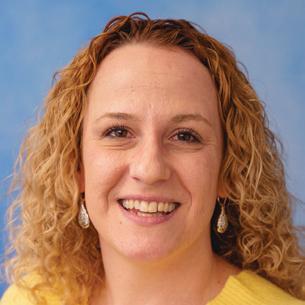
“I’ve struggled since I was 16 with drugs and alcohol. I’ve been in and out of jail, and spent most of my
twenties behind bars,” Heather said. “I could never get even a month sober. When I found out I was pregnant three months later, it changed everything for me.”
Whenever Heather had fears or anxieties about becoming a parent, the Healthy MOMS team was
100th BABY
there to answer her questions and reassure her.
“They always know what to say to make me feel better,” she said. It hasn’t been an easy road, Heather admitted, but she feels supported on her path with the Healthy MOMS Program on her side.
“You have to have a good support system,” Heather said. “Letting people know what you’re thinking is so hard when you don’t trust anybody. But I felt safe with Marcella and Mary. Now, I’m proud of all the stuff I overcame, and I like where I’m at and who I am today.”
ANOTHER HEALTHY MOMS SUCCESS STORY
With steadfast support from Healthy MOMS Case Manager Michele Coyle (below), Scranton resident Ann Palmieri delivered her daughter Paisley in good health on May 28th. During pregnancy and now in motherhood, Ann remains active with the Healthy MOMS program and her Medication-Assisted Treatment. Both she and Paisley are primary care patients of Dr. Linda Thomas-Hemak, who also treats many other members of Ann’s family. With her addiction in the rearview mirror, Ann hopes to pay it forward by becoming a Certified Recovery Specialist one day so she can mentor other young women.
RECOVERING PAGE 17
Healthy MOMS Case Manager Marcella Garvin, left, helped guide first-time mom Heather through her recovery and pregnancy with her daughter, Hailey Rose.
New Addition to Our Wright Center Family
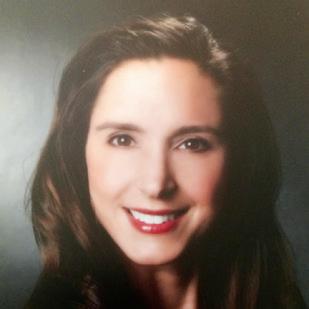

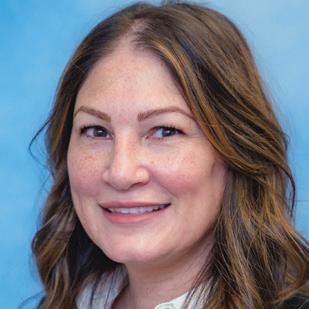
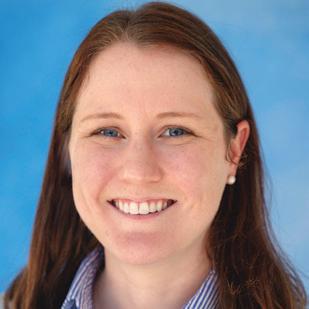
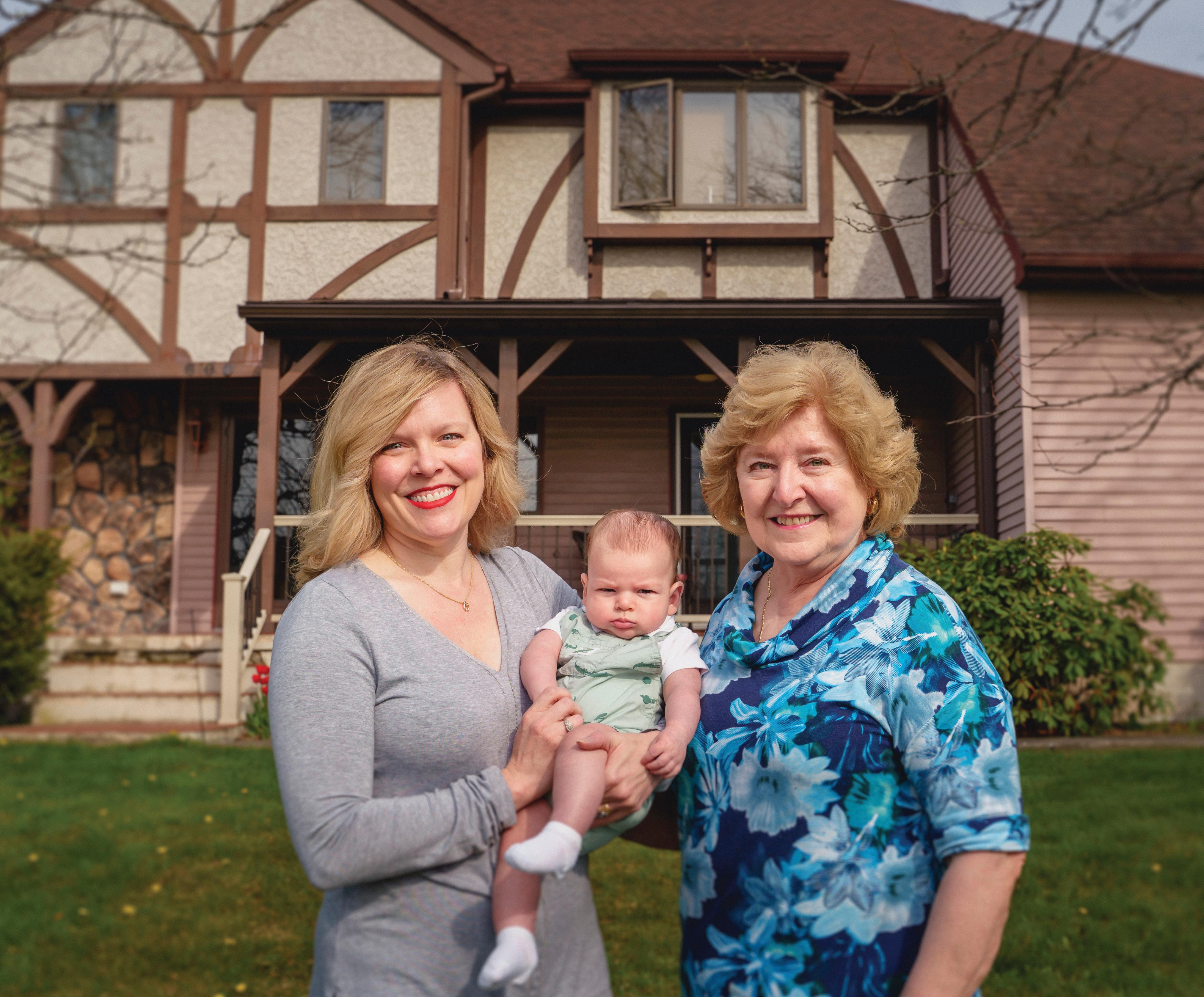
EMERGING
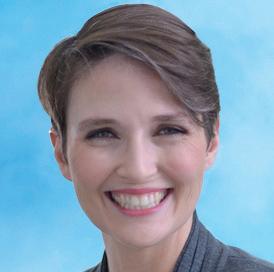
CROWNING ACHIEVEMENT
Our community needs-responsive programming celebrated historic expansion this July with the launch of our affiliation with NYU Langone’s Dental Medicine Postdoctoral Residency Programs. We’re excited to welcome our first pioneering dental resident, Doantrang Nguyen, D.D.S., this summer. This valuable workforce development opportunity was made possible thanks to the hard work
of our dental team, including (from left) Joseph Ercolani, D.D.S.; Darleen Oleski, D.M.D.; local Program Director Caitlin McCarthy, D.M.D.; Manager of Dental Operations Kimberly McGoff; as well as Senior Vice President Meaghan Ruddy, Ph.D., who collaborated with Isaac Navarro, D.M.D, M.P.H., NFMR Director of Community-Oriented Primary Care, and the team at NYU Langone Dental Medicine.
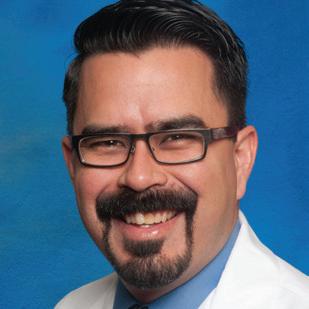
PAGE
18
A snapshot of how we’re preparing for a better tomorrow
From left, Amy Cortazzo, baby Kristov and Joanie Rummerfield represent three of four generations treated by The Wright Center.
Upon giving birth to a healthy baby boy in January, Amy Cortazzo texted the joyous news about her first child to immediate family members and then to a person who, while not related, was key to Amy’s successful pregnancy.
The text recipient was Dr. Linda Thomas-Hemak, President and CEO of The Wright Centers for Community Health and Graduate Medical Education.
Known as “Dr. Linda” to Amy and her family, Dr. Thomas-Hemak has long served as the family’s primary care physician and, at times, a trusted advisor when navigating new life stages and circumstances, such as caring for elderly parents, or in Amy’s recent case, attempting to conceive.
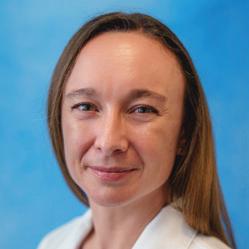
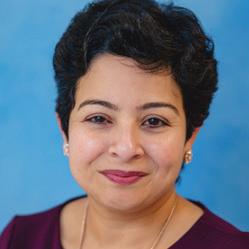
Baby Kristov, who entered the world at 3:38 a.m. on a Saturday, represents the fourth generation of the family to be cared for at The Wright Center, specifically as patients of Dr. ThomasHemak.
Based on Dr. Thomas-Hemak’s research and referral, the couple connected with a New Jersey-based specialist who provided Amy with the answers, comfort and, ultimately, the solution that made her wish come true. Kristov, at 8 pounds, 5 ounces, was born at Moses Taylor Hospital in Scranton, arriving on the fifth anniversary of the date his mother and father had first met. Since then, Amy and her infant son have made multiple visits for routine pediatric checkups to our Mid Valley Practice in Jermyn – a place the family knows well, and where the care team and support staff recognize them.
“It really is a very familial kind of environment, because of all the personal connections we’ve made not just with our doctor but with her staff,” Amy says.
 AMY CORTAZZO
AMY CORTAZZO
“Kristov is, literally, a living testament to her help,” says Amy. “Because we wouldn’t have had him, I don’t think, if it hadn’t been for her.”
Amy got married in 2018, while in her early 40s, and after more than a year of “struggling to get pregnant” she sought the assistance of area fertility specialists. None was exactly the right fit for her situation and needs, she says. In desperation, she called Dr. ThomasHemak.
“I said, ‘Look, I know you’re not an OB, but I just need some advice,” says Amy, of Dickson City. “Not only did she do everything in her professional power to help us, but I feel as though there was almost a spiritual guidance too. She was so good at putting our minds at ease and helping us to think positively.”
Those close relationships between patient and provider are essential to The Wright Center’s role in the community as a patient-centered medical home; the term “medical home” refers not so much to a specific place but rather a special way of delivering healthcare.
Under the medical home model of care, each patient is viewed as an important member of the healthcare team, and the individual’s unique needs, values, culture and preferences help to shape the treatment plan. The patient visits a single site for comprehensive care, which may include physical, behavioral health and dental care, plus other services such as prevention/wellness education. The patient gets to know the doctor, and vice versa. This trusting relationship can give a patient the confidence to talk openly about health concerns and personal issues, resulting, in many cases, in better health outcomes.
In Amy’s case, it resulted in a welcomed new addition to her family.
> Full version of this article at thewrightcenter.org/our-stories
FLIPPING THE PARADIGM TO PREVENTION
With the introduction of Lifestyle Medicine this past year, we continue to provide pathways for our patients and workforce to improve their health and welfare.
One of the fastest growing fields of medicine, Lifestyle Medicine focuses on six pillars of health: nutrition, exercise, sleep, stress management, relationships and the avoidance of risky substances.
“Lifestyle Medicine is about empowering patients to take their wellbeing into their own hands through manageable changes,” explains (clockwise, from top left) Robert Naismith, Ph.D., a GME Board Director and longtime advocate of plant-based diets and other positive behaviors recommended by Lifestyle Medicine experts.
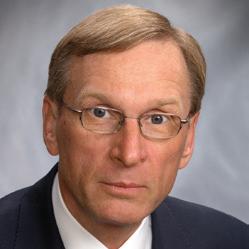
Walter Wanas, a registered and licensed dietitian and nutritionist, joined us to lead the

program as Director of Lifestyle Modification and Preventive Medicine.
Existing clinical leaders also stepped up to make Lifestyle Medicine part of standard patient care, including Jumee Barooah, M.D., Designated Institutional Official, who added Obesity Medicine to her Internal Medicine and Addiction Medicine board certifications. Meanwhile, Erin McFadden, M.D., a Wright Center graduate and one of our Internal Medicine physicians, took on the role of Program Director for our Lifestyle Medicine Residency Curriculum, a collaborative initiative of Loma Linda University and the American College of Lifestyle Medicine.
And Cardiovascular Disease Fellow Tapan Buch, M.D., was featured in the newspaper for his Lifestyle Medicine-friendly recipe for PlantBased Burritos.
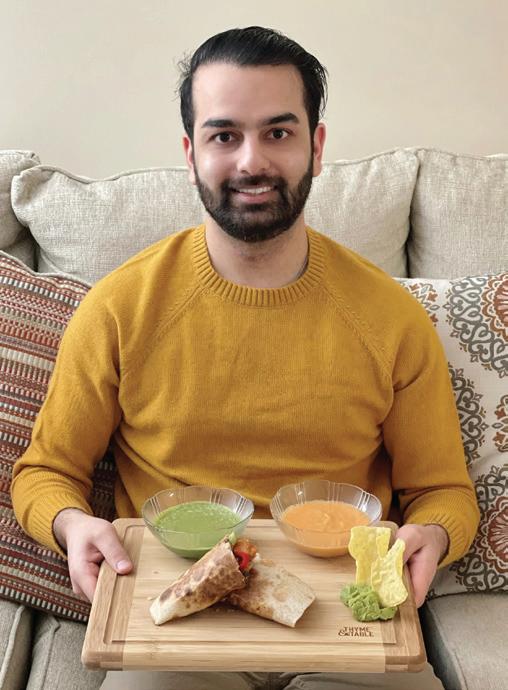
The Wright Center really is a very familial kind of environment, because of all the personal connections we’ve made not just with our doctor but with her staff.”
EMERGING PAGE 19
This year, the GME Team welcomed Marina McLaughlin (top right) as Director of Resident and Fellow Talent Acquisition and Michelle Ostroski (bottom right), who was promoted to Associate Designated Institutional Official. In their respective roles, Marina and Michelle help bring in the best and brightest physician learners to train with us, and remain committed to ensuring these primary care providers enter the workforce ready to make a real difference in the communities they serve.
For aspiring psychiatrist Nathan Hoff, M.D., the search for the ideal residency program didn’t compel him to go halfway across the country, or even the state. Instead, he found what he wanted about 30 miles from his family’s front door. The Honesdale resident, who has lived in Northeast Pennsylvania since he was a boy, recently matched into The Wright Center for Graduate Medical Education’s growing psychiatry residency, becoming only the second area resident to do so. “I was really trying to stay in Pennsylvania to complete my training,” says Dr. Hoff, “so I’m super excited to be here.”
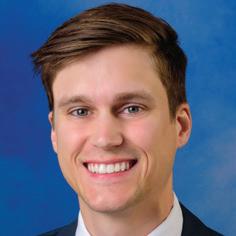

WELCOME,
SOMA
STUDENTS!
In August 2020, we welcomed the first class of 10 students from A.T. Still University School of Osteopathic Medicine in Arizona (ATSU-SOMA) to Scranton. These bright doctors-in-training had been studying in Mesa, Arizona, and arrived in Scranton to continue their educations in our clinical learning environments. The Wright Center will welcome 10 more students from Arizona annually, with 30 students calling Northeast Pennsylvania their clinical campus eventually.
This shared learning model came about thanks to ATSU-SOMA’s partnership with the National Association of Community Health Centers and is part of the school’s dedication to preparing service-minded students to meet the healthcare needs of society by placing them in medically underserved areas for their training. The training ATSUSOMA students receive is unique from other medical schools in that they learn in the classroom while also going into our clinical settings at least once a week.
FUTURE PHYSICIAN
Congratulations to our newly selected Hometown Scholar, Moriah Bartolai. The Pittston resident becomes only the second Wright Centerendorsed candidate to be admitted into the Hometown Scholars program offered by A.T. Still University School of Osteopathic Medicine in Arizona, which targets future physicians looking to make an impact in a community setting. Moriah has worked at The Wright Center since September 2020 as a medical scribe. She will begin medical school in Arizona, then have the opportunity to return to Scranton for her second and subsequent years, preparing in the classroom while also going into our clinical settings.

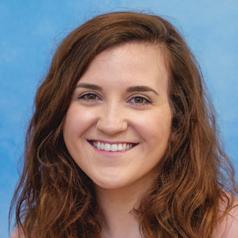
35 10 4 8 1 1 10 PAGE 20
A GREAT MATCH THE WRIGHT STUFF: MATCH DAY 2021 EMERGING WELCOMING 69 NEW RESIDENTS 35 Internal Medicine 12 Family Medicine (Regional) 17 Family Medicine (National) 5 Psychiatry 2 Cardiovascular Disease 1 Gastroenterology 3 Geriatrics 6 NEW FELLOWSHIPS CONFIRMED Residents matched from each country: • 35: United States • 10: Canada • 10: India • 8: Pakistan • 4: Nepal • 1: China • 1: Malaysia
DEMONSTRATED EXCELLENCE
Our pioneering National Family Medicine Residency has been granted a full 10-year accreditation – the highest rating available – by the Accreditation Council for Graduate Medical Education (ACGME).
The announcement, received in February, was cause for celebration and reflection among those most closely associated with the program, including an executive who called it “truly and incredibly momentous.”
“The Wright Center for Graduate Medical Education has changed residency programming at its core,” said Meaghan Ruddy, Ph.D., Enterprise Senior Vice President of Assessment and Advancement and Chief Research and Development Officer.
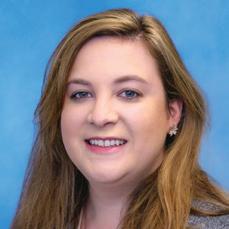
Our unique residency program was created in 2013 to address America’s severe primary care workforce shortage and escalating rural healthcare disparities. Since then, more than 85 family medicine doctors have graduated from the program that now spans four states and two coasts, with training locations in Tucson, Arizona (El Rio Community Health Center); New Richmond, Ohio (HealthSource of Ohio); Auburn, Washington (HealthPoint); and Washington, D.C. (Unity Health Care).
“There really is no other residency in the country that unites physicians across America like our National Family Medicine program, and I’m thrilled to see our efforts recognized by the ACGME,” said Jumee Barooah, M.D., Designated Institutional Official.
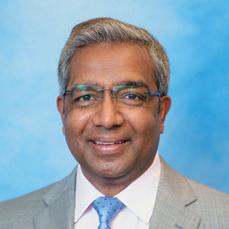
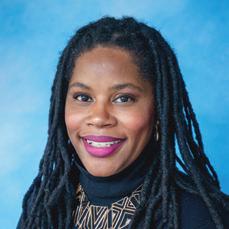
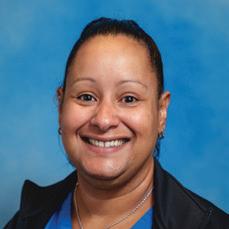
NOTABLE NEW HIRES
Mary Louise Decker, M.D., Medical Director of Infectious Disease Service Line and Ryan White HIV Clinic, and Infectious Disease Specialist Faculty with Internal Medicine Residency Program
Nevena Barjaktarovic, M.D., Rheumatologist and Internal Medicine Faculty

Jason Scotti, M.D., Family Medicine Physician, Sports Medicine Specialist and Associate Program Director for Family Medicine Residency Program
Alexies Samonte, M.D., Medical Director of Pediatric Services and Associate Program Director of Family Medicine Pediatrics

Douglas Klamp, M.D., Internal Medicine Physician and Associate Program Director of Internal Medicine Residency Program
Charles Deck, M.D., Internal Medicine Physician

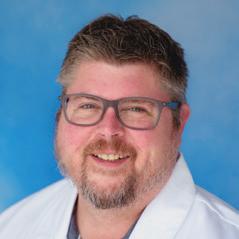
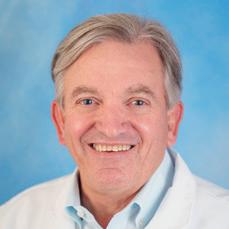
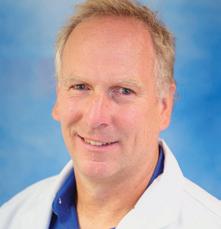

CAREER ADVANCEMENTS
William Dempsey, M.D., Deputy Chief Medical Officer
Aloysius “Mark” Madhok, M.D., Ph.D., Associate Program Director of Internal Medicine Residency Program
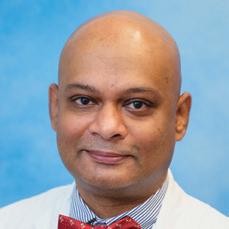
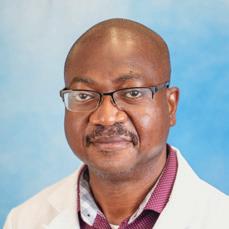

Joseph Sileo, Esq., Senior Vice President and Chief Legal Officer
Kellie Knesis, Vice President of Human Resources
Kathleen Barry, Deputy Chief Operating Officer
Tom Glaser, Associate Vice President of Grant Operations

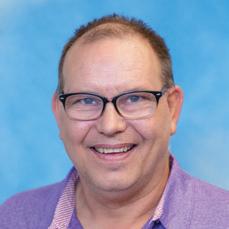
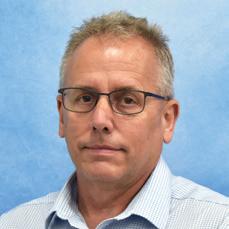
Lida Kiefer, Practice Manager, Hawley
Mary Georgetti, Practice Manager, Wilkes-Barre
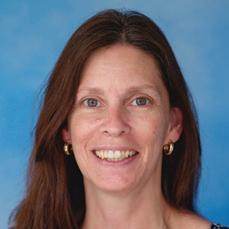

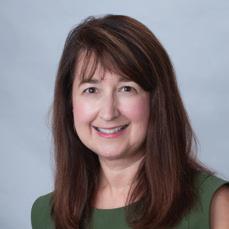
Kimeth Robinson, Practice Manager, Kingston
Dennis Hand, Director of Facilities Management
Eileen Howells, Designated Institutional Administrator for Program Coordination, Compliance and Reconciliation
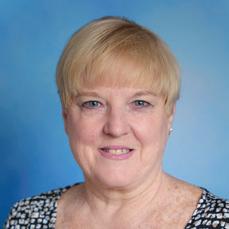
MEET OUR NEW INTERNAL MEDICINE PROGRAM LEADERS
In the summer of 2020, dedicated physician Timothy K. Burke, D.O. (left), took over the role of Program Director for our original residency program, Internal Medicine. Dr. Burke began his Wright Center journey as a resident and ultimately chose to remain here after graduation, going on to serve as Associate Program Director and Program Director of the
former Osteopathic Internal Medicine Residency Program, which has since become the single-accreditation Internal Medicine Program thanks to his guidance and leadership. Dr. Burke is supported in this role by another Wright Center alum, Rajiv Bansal, M.D. (right), who was appointed Associate Program Director. Dr. Bansal previously served as Acting Program Director of Internal Medicine,
overseeing The Wright Center’s three-year residencies in Northeast Pennsylvania. Both serve as exemplary physician leaders who demonstrate a deep commitment to the local patient population. “I couldn’t think of a better place to practice and teach,” Dr. Burke said. “I had enormous shoes to fill in taking over this position from Wright Center President and CEO Dr. Linda Thomas-Hemak, but I endeavor daily to follow her example and be a beacon of organizational pride.”
EMERGING PAGE 21
Kabir Keshinro, M.D., Pediatrician Vijay Prasad, M.D., Pediatrician
Honors and Awards
Several of our clinical and executive leaders were honored over the last year for their individual contributions to our mission and the greater community.
Chief Operating Officer Tiffany Jaskulski and Wendy Wilson, Vice President of Strategic Marketing and Communications, were named two of the “Top 25 Women in Business” by the Northeast Pennsylvania Business Journal.
Sister Ruth Neely, a certified registered nurse practitioner in our Ryan White HIV Clinic, was spotlighted by the National Association of Community Health Centers as part of its “Year of the Nurse” campaign for her “expert medical care mixed with profound compassion.”
Linda Thomas-Hemak, M.D., was named recipient of the Dr. Ann Preston Women in Medicine Award by the Pennsylvania Eastern Region Chapter of the American College of Physicians (ACP). Recognized globally as the world’s largest medical-specialty society, the ACP bestowed the honor upon Dr. Thomas-Hemak as part of its efforts to “recognize excellence and distinguished contributions to Internal Medicine.”
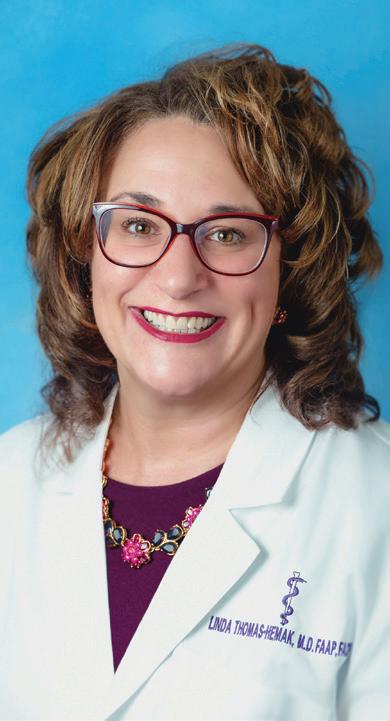
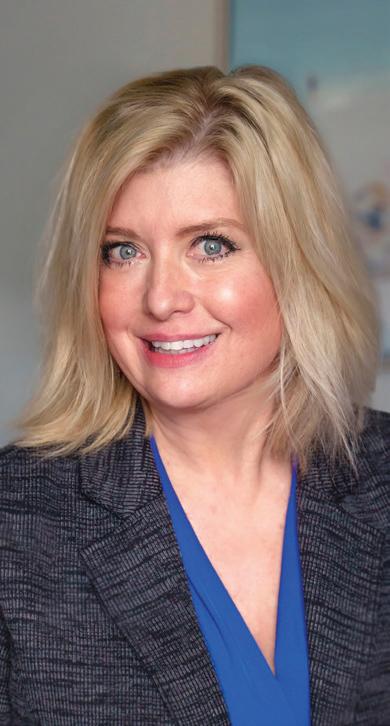


Happenings Magazine featured Internal Medicine physician and Geriatrics Fellow Nirali Patel, M.D., in its “Young Innovators” special edition for her dedication to serving the most vulnerable, especially during the COVID-19 pandemic. This commitment to older adults also earned

her an audience in November with U.S. Senator Bob Casey of Pennsylvania, who listened to her testimonial through a video call.
Happenings Magazine also highlighted the work of Shane Cobert, Director of HIV and Preventive Services, in its “Inspirational Men” issue. Shane’s passionate advocacy for the specialty services offered through our Ryan White Clinic earned him this much-deserved honor.

And overall, The Wright Center was named one of “NEPA’S Best Places to Work” by employees who voted in The Times Leader newspaper’s annual poll. Even during an unpredictable and challenging year, our employees let it be known that they’re privileged to serve here.
For the 2020-21 academic year concluding this summer, 81 physicians completed their training, with many celebrating this terrific accomplishment during our virtual graduation ceremony. Many have confirmed employment in community-based health systems, committing to practice in underserved areas across the nation.
It is also noteworthy that four National Family Medicine residents confirmed employment within the FQHC systems where they trained. Of the 64 physicians who completed their training in our regional programs, 16 will continue their careers within Pennsylvania.
PAGE 22
Sister Ruth Neely Certified Registered Nurse Practitioner
Tiffany Jaskulski Chief Operating Officer
Wendy Wilson Vice President of Strategic Marketing and Communications
Linda Thomas-Hemak, M.D. President and Chief Executive Officer
Shane Cobert Director of HIV and Preventive Services
RECOGNITION
Nirali Patel, M.D. Internal Medicine Physician and Geriatrics Fellowship Graduate
*13 National Family Medicine Residents are graduates of A.T. Still University School of Osteopathic Medicine in Arizona. OUR LARGEST COHORT OF PHYSICIAN LEARNERS TO DATE 17 Unity Health Care, Washington, D.C 12 El Rio, Tucson, Arizona 12 HealthPoint, Auburn, Washington 9 HealthSource, New Richmond, Ohio 9 Cardiovascular Disease 4 Gastroenterology 3 Geriatrics FELLOWS 224 Residents and Fellows will continue their careers within Pennsylvania 16 Physician Graduates 100 Internal Medicine 36 Family Medicine (Regional) 50 Family Medicine (National) 22 Psychiatry RESIDENTS
MADHAVA S. RAO RETIRES

After more than 40 years faithfully serving the community and touching the hearts of many, renowned area cardiologist and medical educator, Madhava S. Rao, M.D., announced his retirement this year.

Dr. Rao has been integral to medical education in the area, starting in 1980 when he was a preceptor for Internal Medicine residents and students enrolled in the Scranton Temple Residency Program, which later became The Wright Center for Graduate Medical Education. He passionately supported the development of our Cardiology Fellowship and made numerous contributions to ensure it has thrived. For more than a decade, he has served as a key faculty leader and as the director of non-invasive cardiology for our fellowship. During his time with The Wright Center, Dr. Rao has been voted him Teacher of the Year on numerous occasions by students, residents and fellows.
In April, Stephen J. Pancoast, M.D., embraced a well-deserved retirement. After decades of service, Dr. Pancoast leaves a legacy of excellent infectious disease specialty care within our Ryan White Clinic and our larger community. We will be forever grateful for Dr. Pancoast’s demonstrated commitment to pioneering and transforming HIV and AIDS care in our region over the last several decades. It’s been a privilege to serve alongside this nationally recognized infectious disease expert, who was the first regional provider to tackle the HIV/AIDS epidemic. In his honor, we presented at this year’s virtual graduation ceremony the inaugural Dr. Stephen J. Pancoast
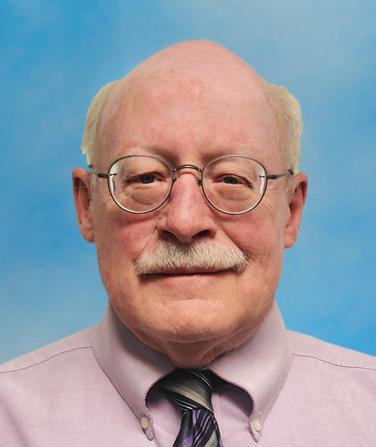
RECOGNITION PAGE 23
Kindness & Humility Award. LEAVING A LEGACY FINANCIAL STRENGTH (Data for 2019-2020 Fiscal Year: July 1, 2019-June 30, 2020) 70% Salaries and benefits $59.3 Million Combined net operating revenue $14.3 Million Combined net assets as a percentage of combined net operating revenue 2020-2021 EMPLOYMENT (as of May 2021) 620 100 42 34 Total Workforce* Staff Hired New Positions Created Career Advancements *396 staff, 224 residents/fellows $82.9 Million 1,025 $68.2 Million Value infused into the regional economy Jobs supported annually Labor income $136.2 Million Monetary output IMPACT ON THE ECONOMY (Data for 2020 Calendar Year: January 1, 2020-December 30, 2020)** **Data calculated by The Institute for Public Policy and Economic Development. Includes direct, indirect and induced effects.
Compassion,
LIAISONS WITH LEADERSHIP
Whether meeting in person or virtually through teleconferences, our leadership interfaced with several notable local, state and national government leaders during the pandemic. These liaisons allowed each of the officials the chance to better understand our work and hear directly from frontline employees and executive leadership, including Chief Governance Officer Jennifer Walsh, Esq., about the hardships and accomplishments we’ve experienced.
In September, then-Deputy Secretary of the U.S. Department of Health and Human Services Eric Hargan visited our Scranton Practice to tour the facility and sit with clinical and executive leaders for a roundtable discussion. During a subsequent press conference, Mr. Hargan announced our award of nearly $500,000 in funding to fight the impact of Neonatal Abstinence Syndrome by improving systems of care, family supports and social determinants of health through the U.S. Health Resources and Services Administration’s Federal Office of Rural Health Policy.
Scranton Mayor Paige Cognetti toured our new Scranton Practice in the city’s South Side neighborhood and learned more about the safety-net primary care services and workforce development offered under our roof.

U.S. Senator and Scranton native Bob Casey connected with executive leadership and several residents and fellows in November via video call to hear stories from the front lines of primary care during the pandemic.



Clinical leaders, executives and numerous residents and fellows were granted a virtual audience with Pennsylvania Congressman Fred Keller in October to provide testimonials about the critical need for continued Teaching Health Center Graduate Medical Education funding.
In May, Linda Thomas-Hemak, M.D., accepted an invitation from the Office of the National Coordinator for Health IT to be the only primary care provider presenting written and oral testimony to President Biden’s Health Information Technology Advisory Committee, shedding light on the challenges faced by public health data systems during the COVID-19 pandemic and the historical and ongoing gaps in current HIT infrastructure.
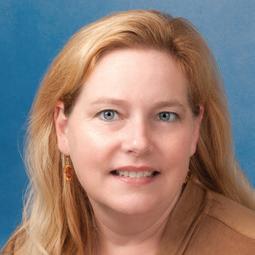
PAGE 24
RECOGNITION
Former Deputy Secretary of the U.S. Department of Health and Human Services Eric Hargan
Scranton Mayor Paige Cognetti
U.S. Senator Bob Casey
Congressman Fred Keller
GRANTS & AID
To support our mission-driven work, we used a combination of COVID-19related loans, grants and other aid to weather the pandemic’s financial challenges. We’re grateful to our many national, state and local funders for their critical support. We also appreciate the dedication of our Grants team as well as our Finance department, led by Chief Financial Officer Ron Daniels, to secure and responsibly steward the funds with which we were entrusted.
CLINIC SUPPORT
AllOne Foundation: Telespond support
Health Resources and Services Administration (HRSA): Ryan White HIV/ AIDS Program
William Randolph Hearst Foundation Pennsylvania Department of Health: Community-Based Health Care Grant Program
The Harry and Jeanette Weinberg Foundation: Operating grant
GRADUATE MEDICAL EDUCATION
Health Resources and Services Administration (HRSA): Teaching Health Center Funding TECHNOLOGY
Centene Corporation and the National Association of Community Health Centers: Telehealth Access Expansion TECHNOLOGY / COVID-19 RELATED
Direct Relief/AmerisourceBergen Foundation
National Association of Community Health Centers’ Quality Center: Patient Care Kit Pilot Project
Daniels, Enterprise CFO, SVP Finance
Baumann, Vice President of Strategic Initiatives

 Glaser, Associate Vice President of Grant Operations
Glaser, Associate Vice President of Grant Operations
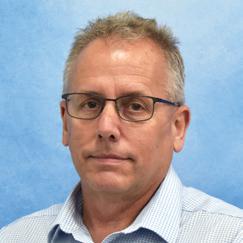
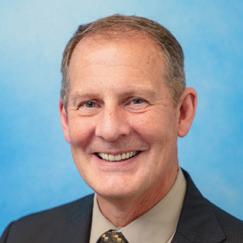

COVID-19 FUNDING
AllOne Charities: Support for Vaccine Clinics through the School-Based Health Program and COVID Vaccines in the Community CDC Foundation: Hazleton COVID-19 Relief Project
Direct Relief: COVID-19 Response Fund for Community Health
Federal Communications Commission: COVID-19 Telehealth Program
Health Resources and Services Administration (HRSA): Health Center Funding
Health Resources and Services Administration (HRSA): Health Center Program Look-Alikes Expanding Capacity for Coronavirus Testing
Health Resources and Services
Administration (HRSA): Ryan White HIV/ AIDS Program Part C Early Intervention Services COVID-19 Response
The Highmark Foundation: Federally Qualified Health Center Look-Alike COVID-19 Response Funding
Moses Taylor Foundation: Essential Community Provider Emergency Response Pennsylvania Department of Health: COVID-19 testing
U.S. Department of Health and Human Services: Provider Relief Funding
U.S. Small Business Administration: Paycheck Protection Program
RECOVERY SUPPORT SERVICES
Appalachian Regional Commission (ARC) INvestments Supporting Partnerships in Recovery Ecosystems (INSPIRE) Initiative
Health Resources and Services
Administration (HRSA): Rural Communities Opioid Response Program – Implementation
Health Resources and Services
Administration (HRSA): Rural Communities Opioid Response Program – Neonatal Abstinence Syndrome
Pennsylvania Chapter, American Academy of Pediatrics: First Food Program
Pennsylvania Department of Drug and Alcohol Programs (DDAP): Pregnancy Support Services
Pennsylvania Department of Health and Pennsylvania Association of Community Health Centers (HRSA Title V Funding): Children and Youth with Special Health Care Needs
Pennsylvania Department of Human Services: Support Services Navigation and Housing Services for Individuals with Opioid Use Disorder Project
Substance Abuse and Mental Health Services Administration (SAMHSA): Medication-Assisted Treatment –Prescription Drug and Opioid Addiction
WELCOME TO THE TEAM
In early 2021, we welcomed Laura Fassbender to the Executive Management Team in the newly created — and mission-critical — role of Vice President of Primary Care and Public Health Policy. Laura served as Executive Advisor to former Pennsylvania Secretary of Health Dr. Rachel Levine and Executive Deputy Secretary Sarah Boateng. Based out of Harrisburg, Laura helps guide, develop and advocate for public health policies and strategies that promote overall population health through systematic efforts to advance prevention, reduce chronic disease burden, and address socioeconomic determinants of health, as well as disparities in both care access and health outcomes. “I’m humbled to become a part of this community-driven, innovative team, and grateful for the opportunity to more closely serve the people of Northeast Pennsylvania,” Laura said.
RECOGNITION PAGE 25
Michael Higgins, Grant Accountant
Ron
Lisa
Tom
EVOLVING GOVERNANCE: NEW PERSPECTIVES
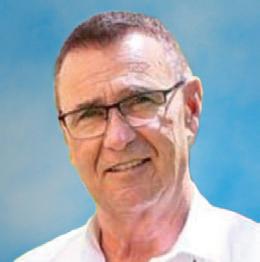
Guided by the inspiring work of Nobel Prize-winning political economist Elinor Ostrom — who outlined the ways in which valuedriven cooperation, collaboration and collective accountability of common pool resources encourage smarter shared stewardship — our previously interlocked Community Health and Graduate Medical Education boards of directors were separated into strategically aligned but independent bodies.
We also empowered the inclusive voice of all stakeholders, including our health center partners from the National Family Medicine Residency network, by inviting new members to our GME board. We’re grateful to Judy Featherstone, M.D., of HealthPoint, Auburn, Washington; Kim Patton of HealthSource of Ohio; Douglas Spegman, M.D., of El Rio Community Health Center, Tucson, Arizona; and Vincent A. Keane of Unity Health Care, Washington, D.C., for lending their expertise to our governance.
And our newly rebranded council, The Wright Center for Patient and Community Engagement, welcomed fresh perspectives to the governing table to help us better determine outreach priorities as we continue to meet the healthcare needs of the most vulnerable in the community.
Across all boards, our diverse directors provide oversight, direction and support for Wright Center team members and their efforts, offering their unique perspectives on community needs, resources and connections.
Ronald Bukowski
With more than 40 years of experience as a math and engineering educator prior to his retirement, Ronald Bukowski offers an important perspective to our GME Board. His additional service as a school board director for Mid Valley School District and Career Technology Center of Lackawanna County also creates an important link to the local young learners community that we are glad to have.
Jason Kavulich

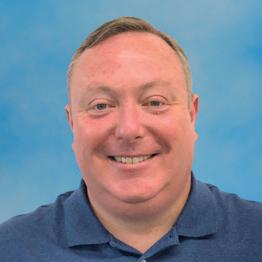
Our Community Health Board gratefully welcomed Jason Kavulich, Director of the Lackawanna County Area Agency on Aging, and his 21 years of experience within the human service field. In his current leadership role with the county, Jason promotes the innovation and expansion of services for older adults and strongly advocates to guarantee their rights and independence, and his place on our governance team expands the ties that best serve the older adults of our community.
Cheri Lewis-Aulisio
Thanks to her background working with diverse patient populations in various clinical settings, Cheri Lewis-Aulisio has been a great addition to our care team, where she works as a licensed medical social worker, and to the PCE Board. Cheri’s voice on the council is also informed by her experience working with homeless women and children and by her participation with the National Association of Community Health Centers’ PRAPARE Tiger Team, which trains health centers to be better equipped to address social determinants of health and improve health equity.
Kari Machelli, R.N.
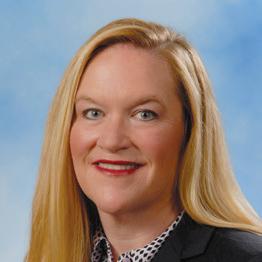

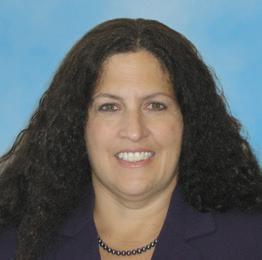
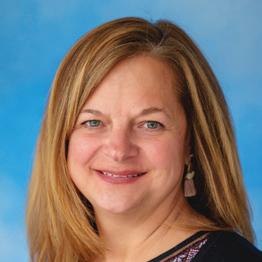
Kari Machelli, R.N., has been with The Wright Center for more than 20 years, starting as an RN Care Manager and now serving as Associate Vice President of Integrated Primary Health Services. In this leadership role, Kari oversees the Opioid Use Disorder Center of Excellence Case Managers, Certified Recovery Specialists and Community Health Workers, making her a critical member of our PCE Board thanks to her proximity to care teams to enact solutions suggested at the governing table.
Gertrude C. McGowan
Attorney Gertrude C. McGowan brings plenty of experience serving vulnerable populations in Luzerne, Lackawanna, Monroe and Wyoming counties to our GME Board. Her tenure as CEO of Family Service Association of Northeastern Pennsylvania, a nonprofit agency that provides professional counseling, guardianship and operational services and programs to at-risk families, is the sort of community-minded leadership for which we are grateful.
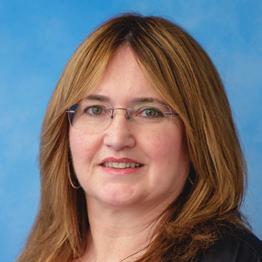
Teri Ooms
As Executive Director of The Institute, an NEPA-based applied social science research and economic consulting organization empowered by a collaborative of higher education institutions and businesses, Teri Ooms is the kind of “big-picture thinker” our GME Board needs. Her commitment to growing organizational impact and sustainability through community-based research makes her an incredibly solutions-oriented board director.
Kevin Sullivan
Kevin Sullivan, a career communications expert who has had experience in the White House, corporate and sports media relations at the most senior levels, was a most welcome addition to our governance team. Kevin served as White House Communications Director under President George W. Bush and as the Senate-confirmed Assistant Secretary for Communications and Outreach at the U.S. Department of Education. His impressive resume also includes time served as Senior Vice President for Corporate Communications and Media Relations at NBC Universal, and as Vice President of Communications at NBC Sports. Since 2009, he has led his own national consulting firm. Kevin’s skills in strategic communications and leadership development have made him a uniquely qualified director for our GME Board.
Debra Youngfelt Engaging Debra Youngfelt for our GME Board is one example of our increasingly empowering partnership with the East Central and Northeast Pennsylvania Area Health Education Centers (AHEC). As the Executive Director of this nonprofit agency, Debra leads efforts to enhance access to healthcare and improve the distribution of healthcare professionals through academic and community partnerships, and offering programs that are designed to recruit, train and retain a diverse healthcare workforce.
PAGE 26
RECOGNITION
ACKNOWLEDGE:
Our board members who unselfishly dedicate their time and expertise; Our residents and fellows who entrust us with their education; The patients and families who place their confidence in our care teams; Our employees and staff who deliver our mission and vision every day; Our community, which shapes our experience and allows us to serve.
The Wright Center for Community Health is patient- and community-governed to ensure a patient-led majority, in alignment with Federally Qualified Health Center Look-Alike requirements. The Wright Center for Community Health Board gives voice to individuals, families and communities, and provides meaningful contributions and guidance to ensure that we deliver care to the nation’s most vulnerable and underserved patients and families, in alignment with the mission of HRSA and the Bureau of Primary Health Care.
Linda Thomas-Hemak, M.D., CEO, Ex-Officio, Non-Voting
Gerard Geoffroy, Chair
William Waters, Ph.D., Vice Chair
Deborah Kolsovsky, Treasurer Mary Marrara, Secretary Mary Ann Chindemi
Jody Cordaro
Patricia Desouza
Susan Duckworth
LeeAnn Eschbach, Ph.D. James Gavin Kim Heritsko Kristen Hill Tracy Hunt
Jason Kavulich John Kearney
Richard Krebs Lewis Marcus Jeff Metz Melissa Simrell Francis Stevens Ellen Walko
Linda Thomas-Hemak, M.D., President
Harold Baillie, Ph.D., Chair
James Gavin, Vice Chair John Kearney, Treasurer
Robert Naismith, Ph.D., Secretary Jumee Barooah, M.D., DIO Thomas Bisignani
Ronald Bukowski
Patrick Conaboy, M.D.
Judy Featherstone, M.D. Gerard Geoffroy
Vincent Keane
Mary Marrara
Gertrude C. McGowan, Esq. Sharon Obadia, D.O. Teri Ooms
Michael Paglia, M.D. Kim Patton
Lia Richards-Palmiter, Ph.D. Carol Rubel
Douglas Spegman, M.D. Kevin Sullivan
Debra Youngfelt
AFFINITAS HEALTH INNOVATIONS INC.
Linda Thomas-Hemak, M.D., President
Gerard Geoffroy, Vice President
John Kearney, Treasurer
James Gavin, Secretary
Mary Marrara
Jignesh Sheth, M.D.
COMMUNITY HEALTH HUB
Linda Thomas-Hemak, M.D., Chair
Gerard Geoffroy, Vice Chair
Mary Marrara, Treasurer
William Waters, Ph.D., Secretary
Mary Ann Chindemi
Patricia Desouza
LeeAnn Eschbach, Ph.D. Frank Koza
Melissa Simrell
Linda Thomas-Hemak, M.D., Co-Chair
William Waters, Ph.D., Co-Chair
Gerard Geoffroy, Immediate Past Chair
Mary Marrara, Vice Chair
LeeAnn Eschbach, Ph.D., Secretary Cathy Genco, Treasurer
Karen Case
Gail Cicerini Charlie Hemak
Danielle Hennessey
Frank Koza
Kellen Kraky
Cheri Lewis-Aulisio
Marianne Linko
Lorraine Lupini Kari Machelli
Donna Passino
Sarah Quinlin-Sheridan Carol Rubel
Tammy Saunders Ellen Walko
THE WRIGHT CENTER ALLIANCE
Linda Thomas-Hemak, M.D.
James Gavin, Chair
Gerard Geoffroy, Vice Chair
John Kearney, Treasurer/Secretary Susan Duckworth
Mary Marrara Jeff Metz
Jignesh Sheth, M.D.
THE LIST ABOVE INCLUDES ALL INDIVIDUALS WHO SERVED ON A BOARD AT ANY TIME FROM JULY 1, 2020 - APRIL 30, 2021. FOR A CURRENT LIST OF BOARD MEMBERS, VISIT THEWRIGHTCENTER.ORG/BOARD-MEMBERS.
WE HUMBLY
RECOGNITION PAGE 27
Celebrating the Class of 2021
n a banner year for The Wright Center for Graduate Medical Education, 81 physicians completed their training and celebrated their tremendous accomplishments during our annual graduation ceremony – the second to be held virtually as a result of the pandemic.
I
All members of our 43rd graduating class demonstrated resiliency and courage during an historic public health crisis.
Among the most anticipated moments of 2021’s ceremony: the presentation of awards to select graduates. This year, a number of new recognitions for outstanding performance were bestowed to physicians who also represented other historic Wright Center “firsts,” including:
• The new Dr. Sanjay Chandragiri Outstanding Psychiatry Resident Award, presented to Alex Slaby, M.D., a member of our first graduating class of Psychiatry residents;
• The inaugural Dr. Stephen J. Pancoast Compassion, Kindness & Humility Award, presented to Mladen Jecmenica, M.D., the first graduate of our Gastroenterology Fellowship; and
• The first Gerard Geoffroy Patient and Community Engagement Award, bestowed on Nirali Patel, M.D., who is among the first graduates of our newly established one-year Geriatrics Fellowship.
We also applaud this year’s recipients of The Wright Center “Values in Action” Spirit Award: the National Family Medicine Residency and the Gastroenterology Fellowship programs.
What a remarkable class! Read the accompanying quotes to find out what some of these graduates had to say about their Wright Center experiences.

“The Wright Center offered me a job after graduation, and I decided to take it. It just makes sense. A doctor has to be a student, because a doctor has to learn. So, it’s best that I stay in a setting with residents and fellows, where I can challenge myself and learn something new every day.”
Nirali Patel, M.D., Geriatrics fellow and soon-to-be Wright Center faculty

PSYCHIATRY’S FIRST CLASS:
Rooshi Patel, M.D.: “When you enter an established residency, you don’t get much of a say in the direction the program goes. But joining a new program gave me that opportunity. Also, I felt that in a new program I would have a bigger opportunity to have more clinical experience. And that’s exactly what we got.”
Hema Venigalla, M.D.: “It’s been a very good experience working with founding program director Dr. Sanjay Chandragiri and the other residents in building the program. We discussed everything with Dr. Chandragiri: how to build the didactic curriculum, how to do our rotations. I definitely will cherish my experience.”
Qais Zalim, M.D.: “I’ll miss the other three residents a lot. It could have easily gone sideways for me if they weren’t here. … It’s very easy for me to work with them, because I don’t have to worry about anything. I know I’m going to help them, and they’re going to help me.”

Alex Slaby, M.D.: “If I had to go back and choose again, I would definitely come to The Wright Center. I was satisfied with everything. I got a great education. I feel like I’ll be a good psychiatrist because of the people who taught me. I definitely feel ready.”
“It all started four years ago when I went to Dr. Thomas’s office to ask for a letter of recommendation for a GI fellowship. She came up with another idea: Why don’t we just start the GI fellowship at The Wright Center? At the time, I thought she’s probably not from this planet, because it’s so hard to get into a GI fellowship, let alone start your own. Fast forward to four years later. Obviously, knowing now that we have the first graduate from The Wright Center GI Fellowship program, I cannot help but notice two things. Miracles do happen. And Dr. Thomas is definitely from Mars!”
Mladen Jecmenica, M.D., First graduate of our Gastroenterology Fellowship
“The thing that moved me the most in my residency is the frailty of human life. A minuscule thing like a virus can drastically change our lives forever! It was very humbling and heartwarming to be at the dying patients’ bedsides when their families couldn’t. I grew immensely as a human being and a doctor over the years. I am very grateful to The Wright Center for providing me a sound foundation for a community-centered medical career and introducing me to all the lovely people I had the pleasure of working with.”
“The Wright Center was the right place for me to train. I completed my Internal Medicine residency and decided to stay within the organization for the Cardiovascular Diseases Fellowship due to its strong training in clinical cardiology and ample opportunities in clinical research working along with the program director.”
 Gaurav Patel, M.D., Chief fellow, Cardiovascular Diseases
Gaurav Patel, M.D., Chief fellow, Cardiovascular Diseases

“Taking care of patients is just something I’ve always had at my core. That’s why it’s been such a privilege that The Wright Center took me on, because it gave me the opportunity to do what I’ve always wanted to do. My advice to the incoming residents is to remind yourself every day of why you’re here and why you’re doing this. Remind yourself why you love medicine, why you love being a doctor and why you love taking care of people. It’s the most rewarding profession on the planet.”



 Aarun Saini, M.D., Graduate of our Family Medicine Regional Residency
Aarun Saini, M.D., Graduate of our Family Medicine Regional Residency




 Sangeeta Prabhakar Bhat, M.D., Graduate of our Internal Medicine Residency
Sangeeta Prabhakar Bhat, M.D., Graduate of our Internal Medicine Residency


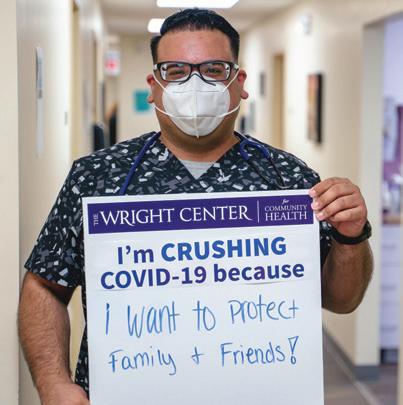






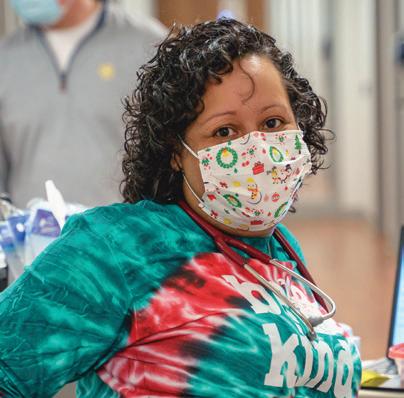
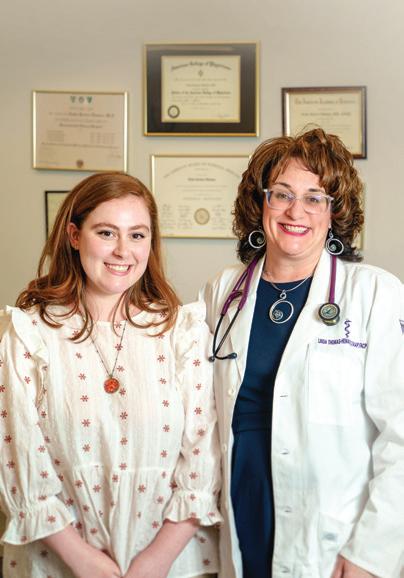
501 South Washington Avenue, Suite 1000, Scranton, PA 18505 Administrative Offices: 570.343.2383 | TheWrightCenter.org Funding for many of our services and graduate medical education programs is provided by the Health Resources and Services Administration (HRSA) of the U.S. Department of Health and Human Services (HHS). In 2021, active HRSA awards for The Wright Center for Community Health and The Wright Center for Graduate Medical Education together total $21,868,622 with varying percentages financed with non-governmental sources available per program. The contents are those of the author(s) and do not necessarily represent the official views of, nor an endorsement, by HRSA, HHS, or the U.S. Government. For more information, please visit HRSA.gov. The Wright Center for Community Health and its affiliated entity, The Wright Center for Graduate Medical Education does not discriminate on the basis of race, color, national origin, sex, age or disability in its health programs and activities.















 LINDA THOMAS-HEMAK, M.D. PRESIDENT AND CEO, THE WRIGHT CENTER FOR COMMUNITY HEALTH AND THE WRIGHT CENTER FOR GRADUATE MEDICAL EDUCATION
LINDA THOMAS-HEMAK, M.D. PRESIDENT AND CEO, THE WRIGHT CENTER FOR COMMUNITY HEALTH AND THE WRIGHT CENTER FOR GRADUATE MEDICAL EDUCATION






























































 AMY CORTAZZO
AMY CORTAZZO











































 Glaser, Associate Vice President of Grant Operations
Glaser, Associate Vice President of Grant Operations














 Gaurav Patel, M.D., Chief fellow, Cardiovascular Diseases
Gaurav Patel, M.D., Chief fellow, Cardiovascular Diseases




 Aarun Saini, M.D., Graduate of our Family Medicine Regional Residency
Aarun Saini, M.D., Graduate of our Family Medicine Regional Residency




 Sangeeta Prabhakar Bhat, M.D., Graduate of our Internal Medicine Residency
Sangeeta Prabhakar Bhat, M.D., Graduate of our Internal Medicine Residency










